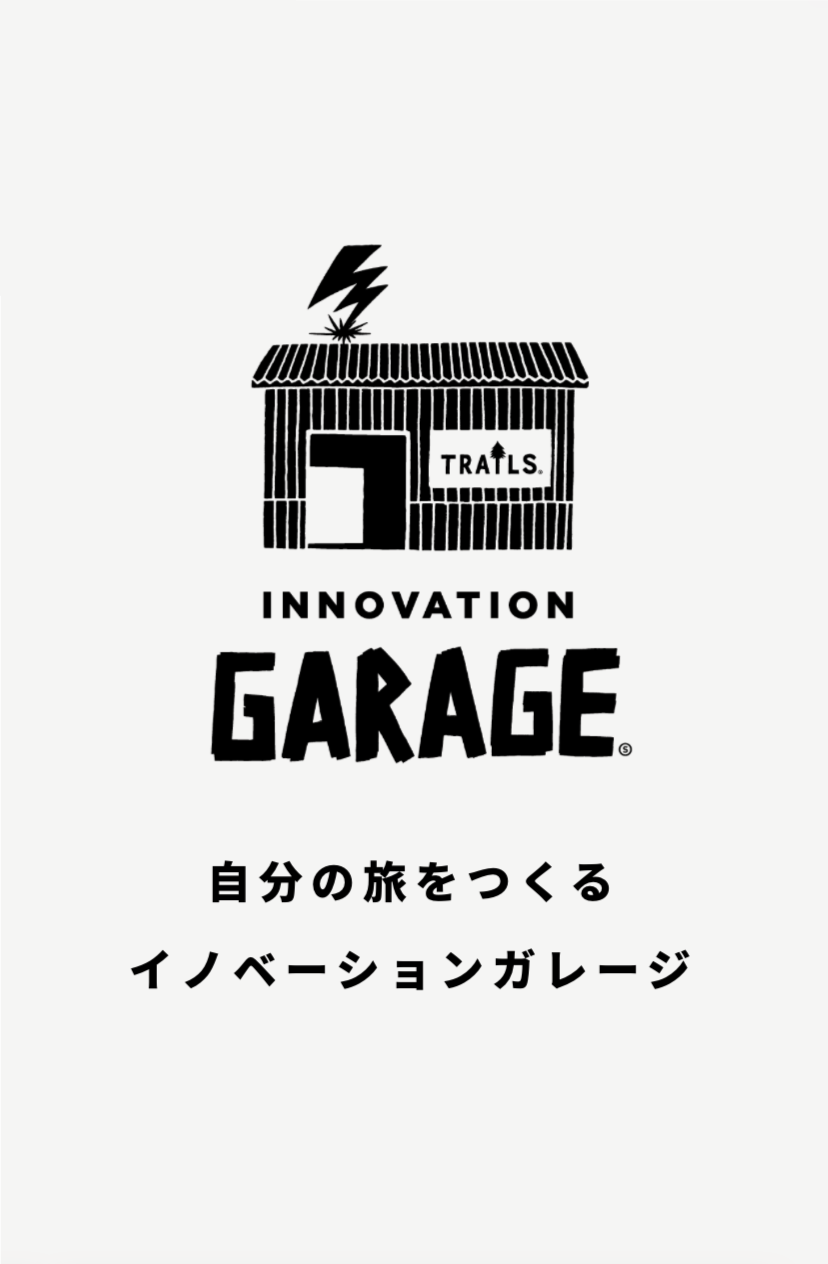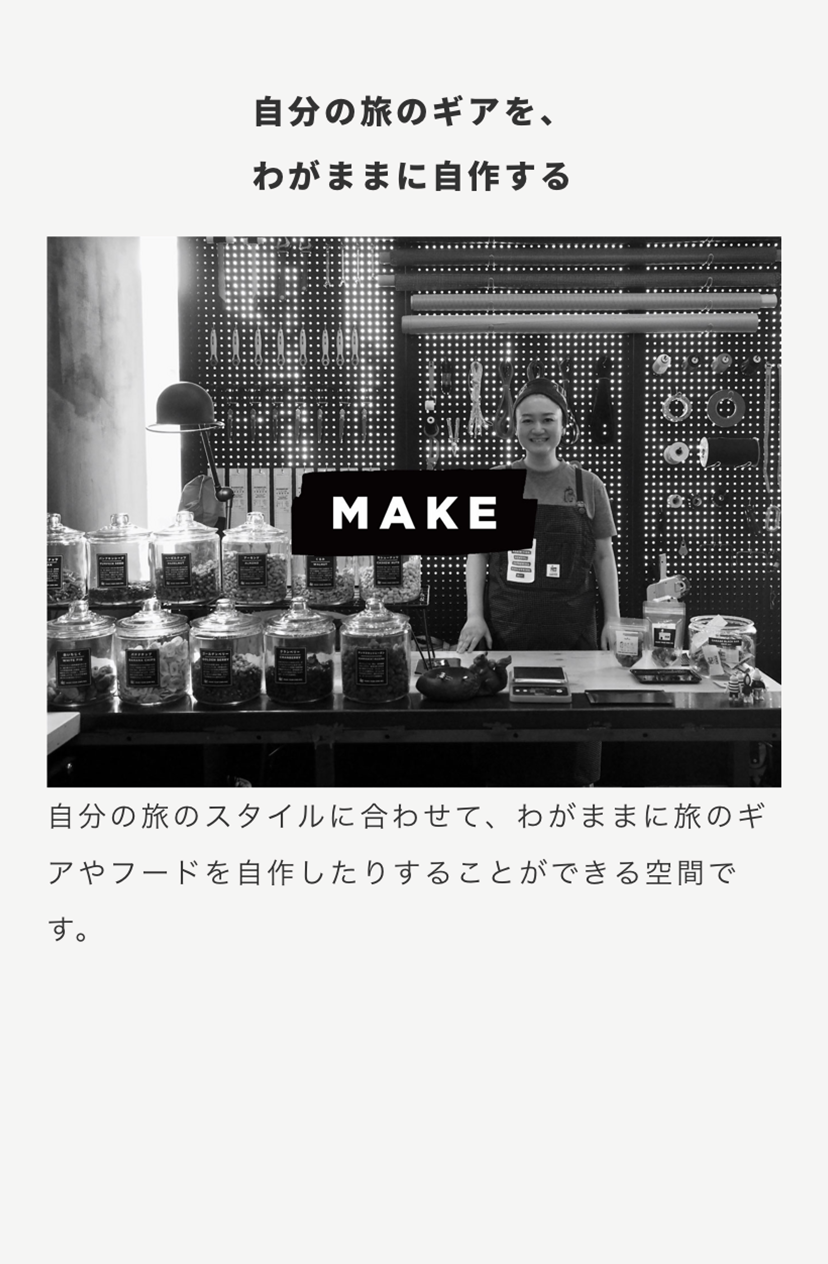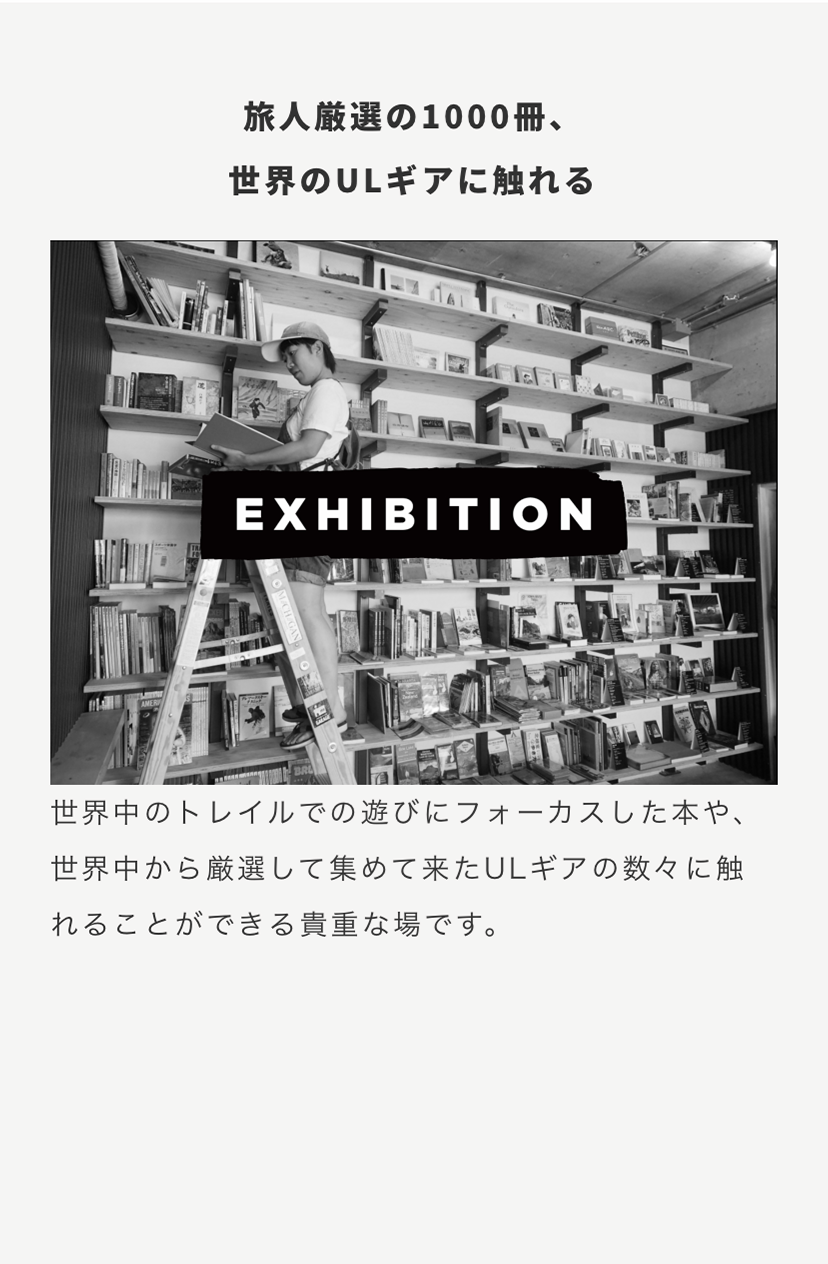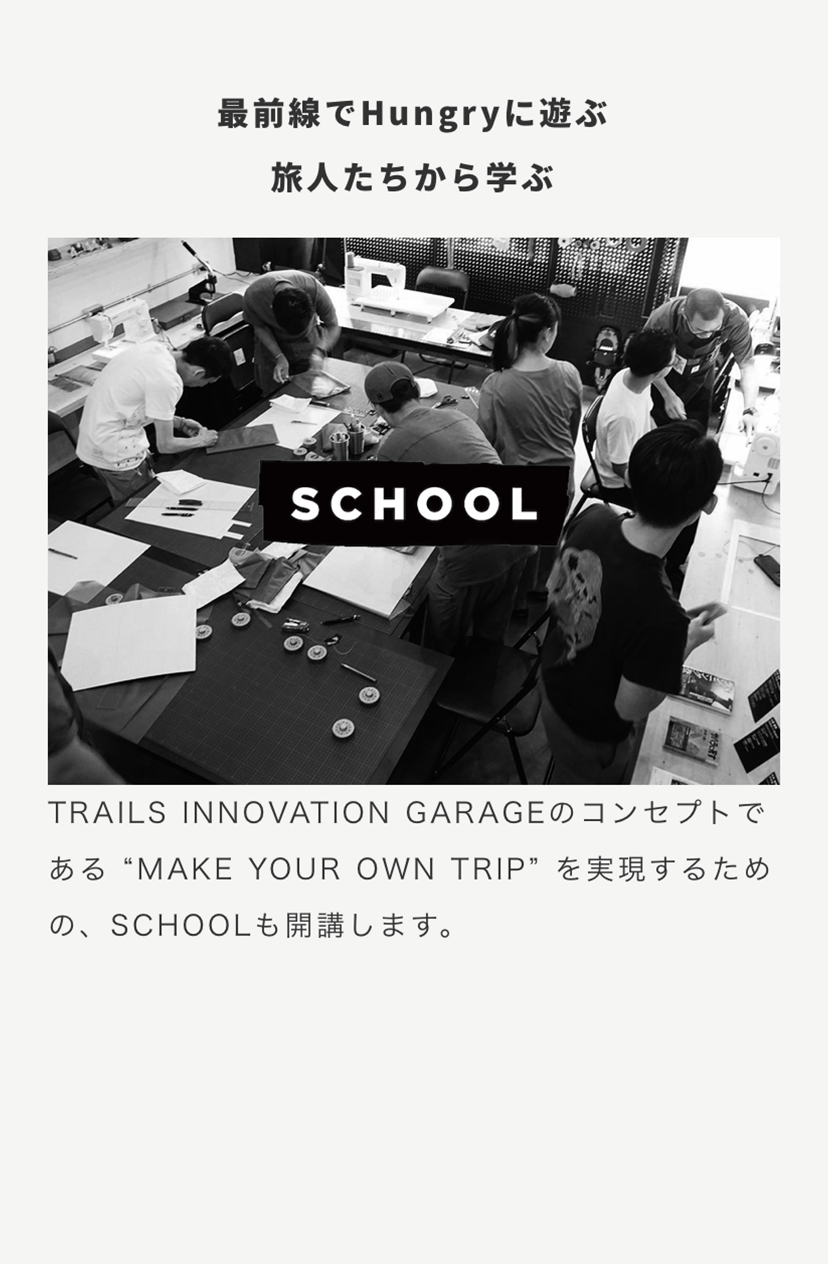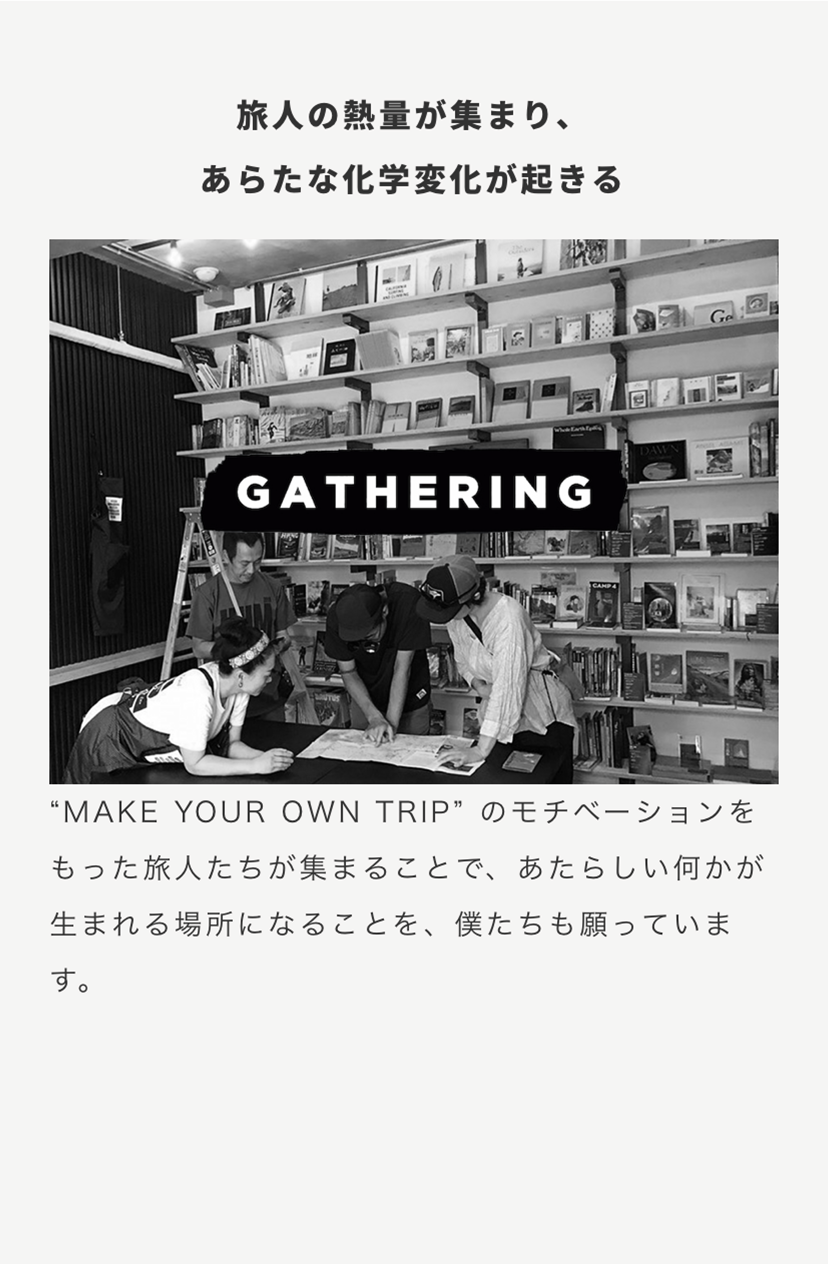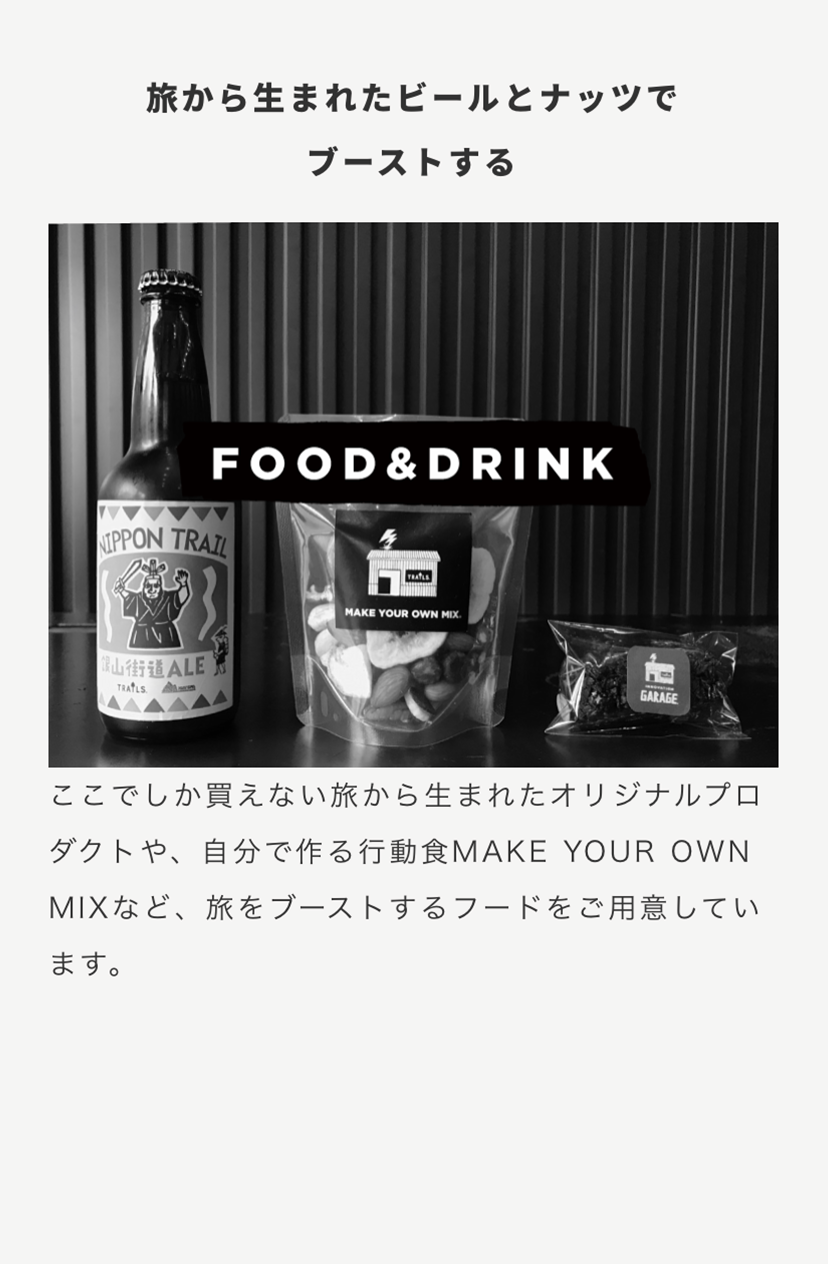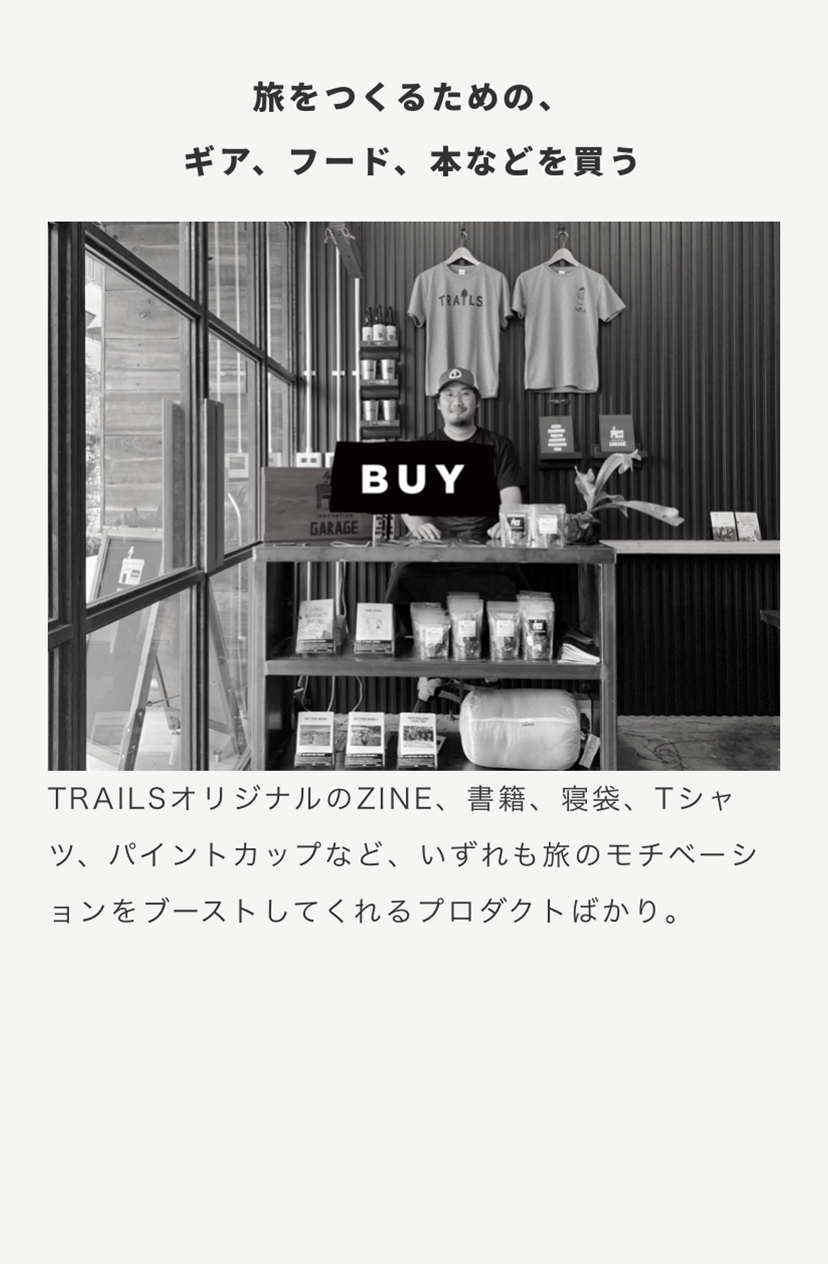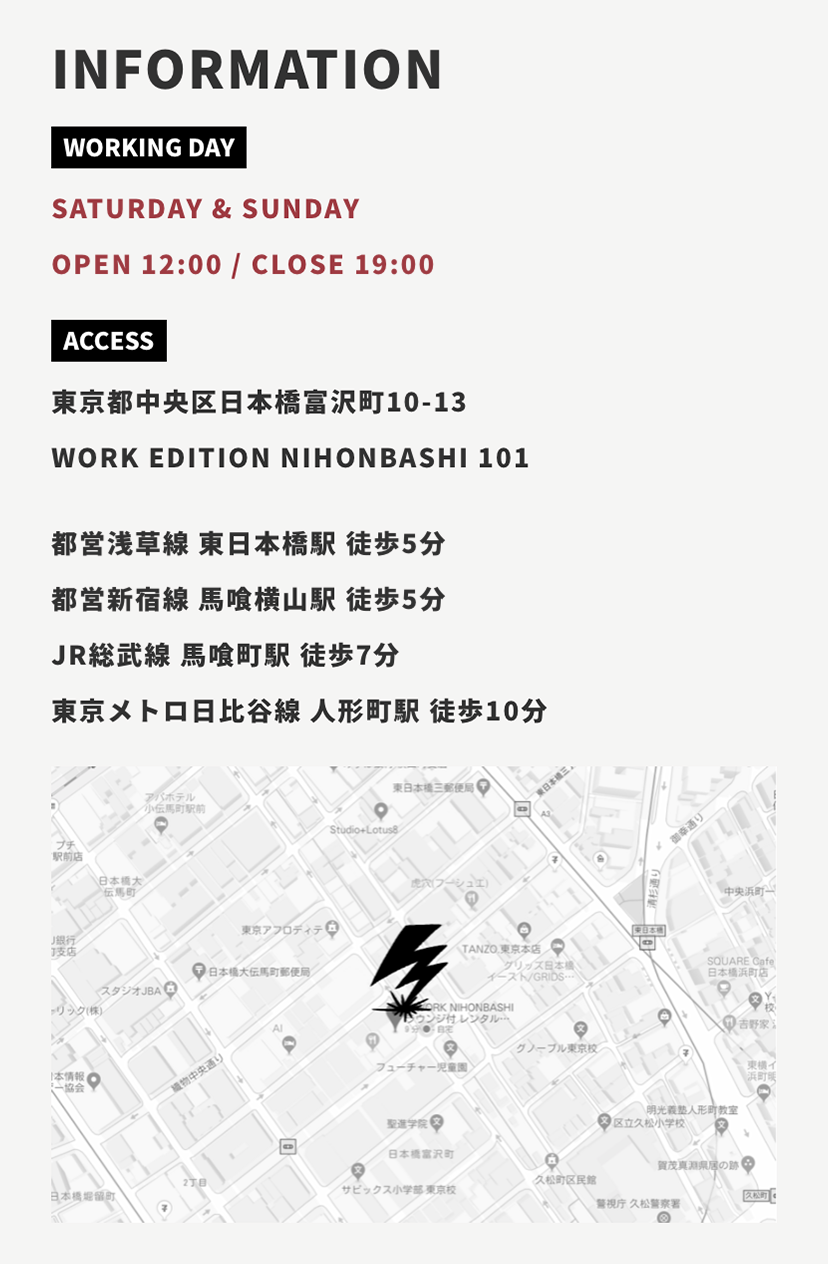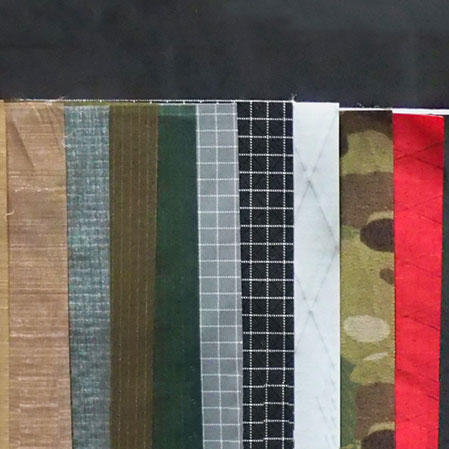パックラフト・アディクト | #25 グランドキャニオン <後編>大自然と急流をめぐる12日間364キロの川旅
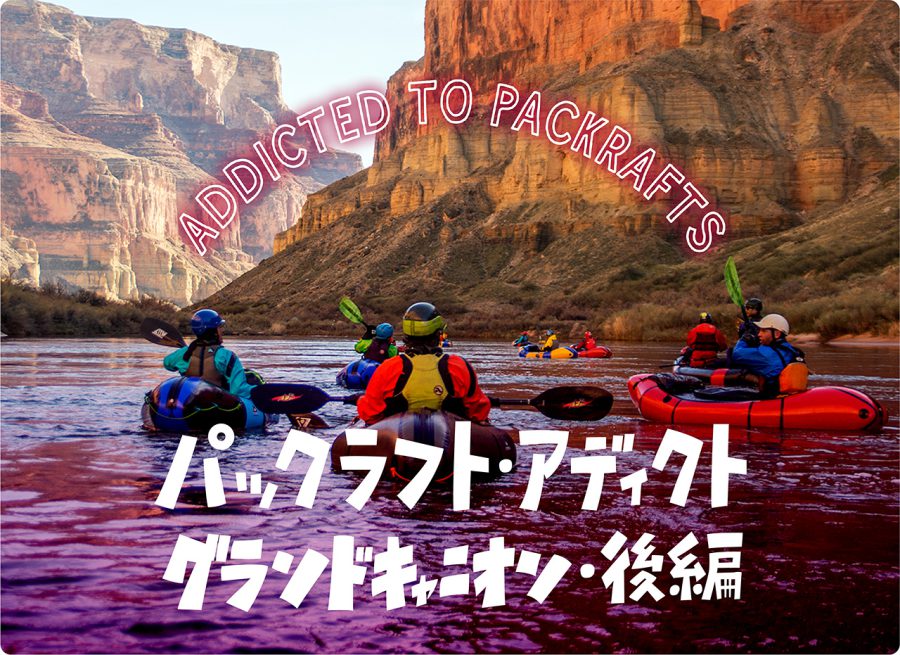
PACKRAFTING THE GRAND CANYON – PART2
Starting Point
To understand where I come from, it’s first important to mention that I’m an intermediate paddler. I have been paddling on various rivers in different countries around the world for the last 7 years, but when it comes to technical stuff, I still have really a lot to learn. And this trip was a great lesson for me.
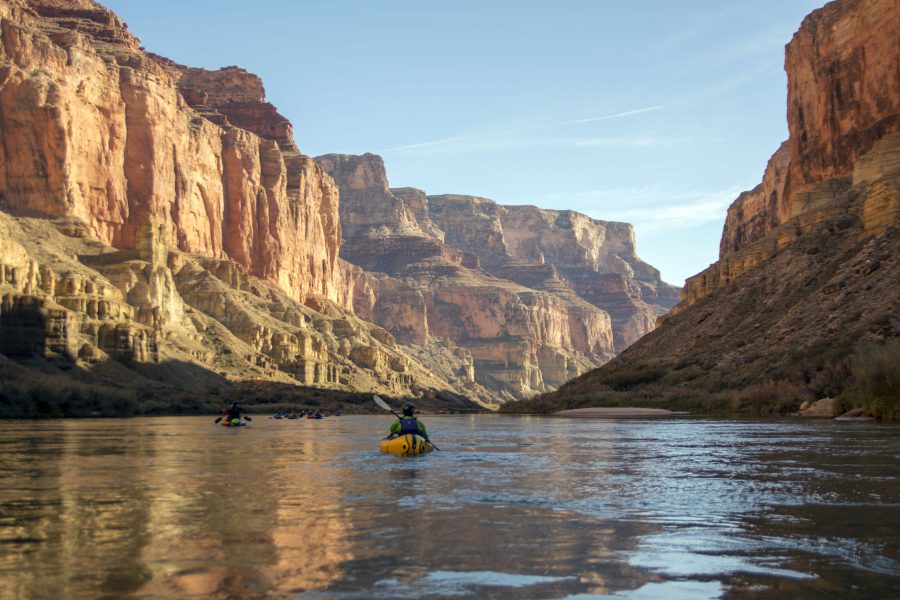
It was also my first desert trip. There just no deserts where I usually go. And the whole idea of a high-volume river in the middle of the desert was a bit alien to me.
It was also my first time on such a big volume whitewater river in general as well. I have paddle on big rivers before. But none of them had so many rapids.
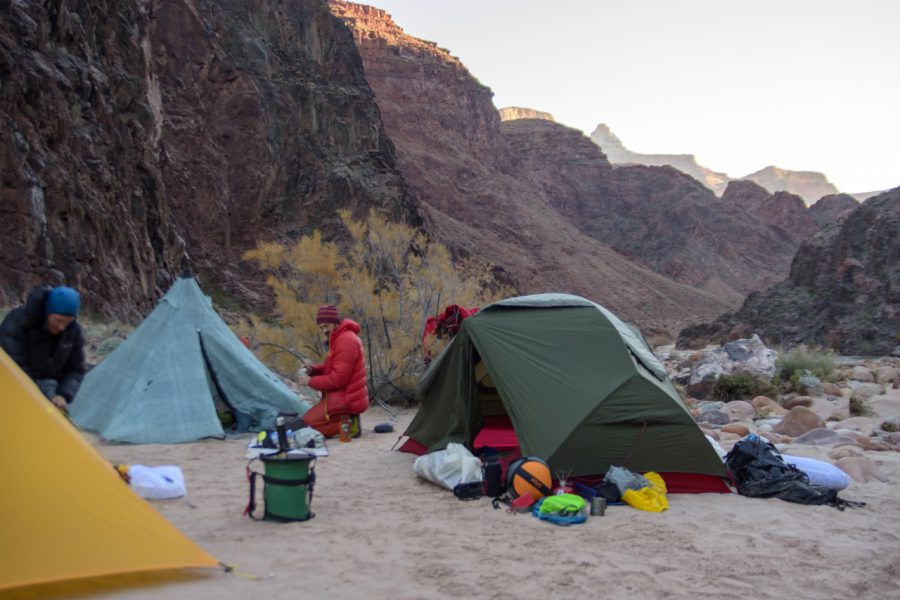
With its 12 days, it was the longest self-supported trip that I was on. The second longest was the trip in Karelia also last year, but it was very very different.
And it was “the trip of a lifetime” or at least that’s what I told my wife when asking for her permission (please see Part 1).
The trip in numbers
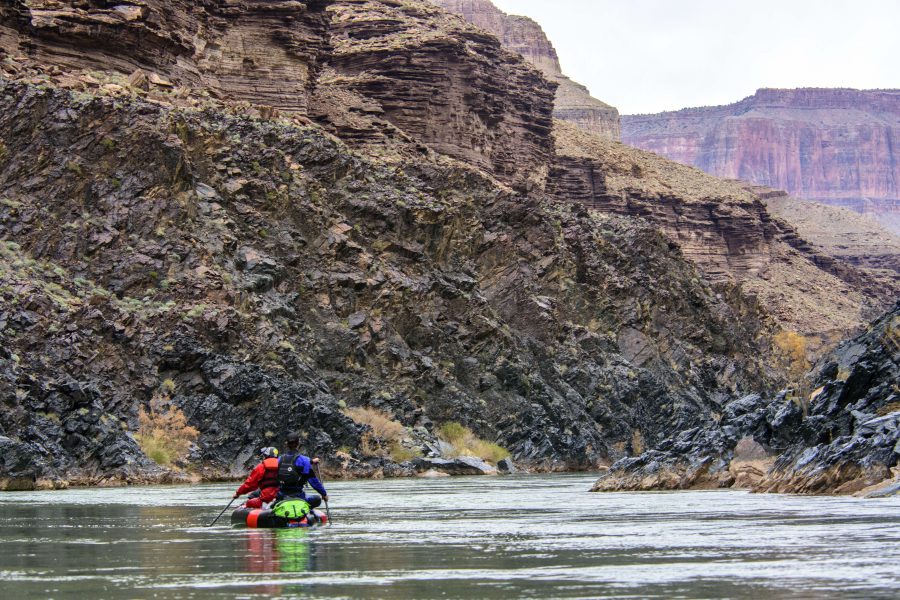
Each year there are around 29,000 people, who paddle the Colorado River through the Grand Canyon and yet the bulk of them are on the commercial trips which take place mostly in warmer months. For example, on our trip we met only 5 other groups, each of which had maximum 16 people (the maximum legal number for a full group). And most of these groups we actually met at the beginning of the trip and only once we camped in the direct view of another such a group, who were located on the other side a mile or so down the river.
If I add everything up, the costs for this trip for me were around 2,000 Euro. Is this a lot? Taking into account that besides the paddling permit, the shuttle costs and the food, this sum also includes a rather expensive last-minute flight ticket, it’s safe to say that it’s not. Especially if compared to the costs of commercial tours that range between from 2,000 to 6,000 USD just for the trip itself.
Over the 226miles(363.7 km) of the Colorado River that we paddled from the put-in point at Lees Ferry to the take-out point at the Diamond Creek, the river drops 543 meters. This is especially visible when looking at the Diamond Peak near the place we finished, which is at the same altitude as our starting point. It took us 12 days to paddle this distance, which meant that we had some rather long days just to afford one half-day of rest, which we used to climb the Tabernacle, a small peak that offered a great view over the canyon.
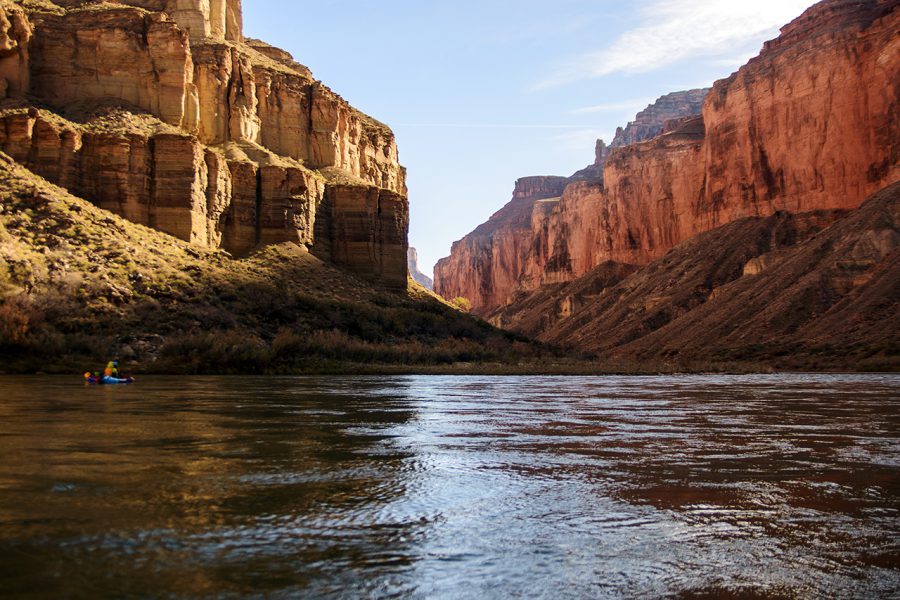
Even though the water level can change regularly due to the planned releases from the dam or the ‘unplanned’ rain, we were lucky to have around 420 cubic meters per second, which was a bit higher than average. The most water you usually get is at the beginning of November, when they create an artificial flood, which helps to clean the river. It also reshapes its beaches. That is why, even though we were there at the end of the year, after thousands of people who had been there that year before us, very often we had clean and pristine beaches that no one had set their foot on before. That’s a great reason to travel in winter.
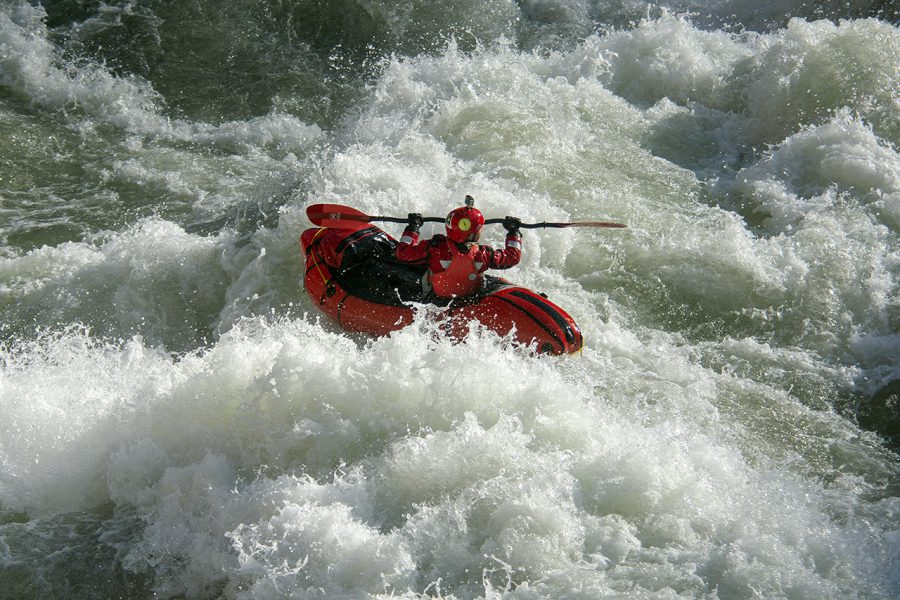
The Grand Canyon is not only famous for its scenic beauty, but also for the whitewater. They also have their own classification of rapids starting from 1 and progressing up to 10 as the most difficult. However, it seems that this class 10 rapids almost do not exist as even the most difficult rapid, the Lava rapid, is variably classed as 8 to 10, depending on the water level.
Altogether, there are 42 rapids GC class 5 and above that we paddled on our trip. The interesting thing is that with the exception of the “Roaring 20s” (the rapids that are located between River Miles 21 and 29 and that form a class of their own), the difficulty of the rapids is gradually increasing, as if preparing you for the grand finale of the Lava rapid at the river mile 179.7. Besides those rapids, there are lots of so-called riffles – usually wave trains that are neither named, nor have a class. But still, you should not underestimate them – during the trip I swam 14 times, at least 5 of which were on those unnamed riffles. We did take sneak lines in two difficult rapids though. If not, I bet I would have swum two times more.
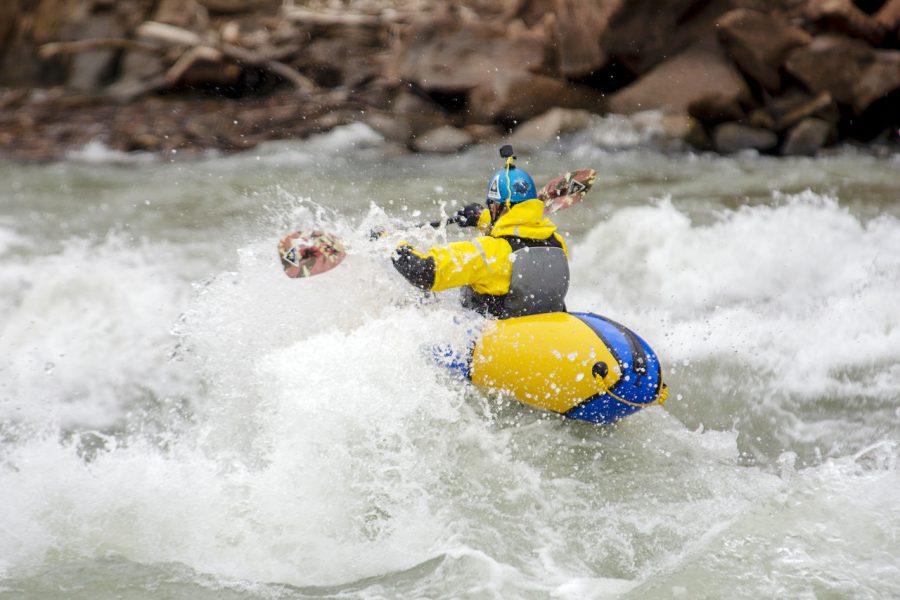
As I have mentioned before, we started the trip at Lees Ferry with 16 people (11 Americans and 5 Europeans), out of whom only 13 finished it at the Diamond Creek. Luckily it was not due to any accident of any kind, but was planned from the very beginning. Due to lack of time, three of us had to hike out to the Rim from the Phantom Range, the only place where there is a bridge and a path linking the South and the North sides of the canyon. This took them 6 hours.
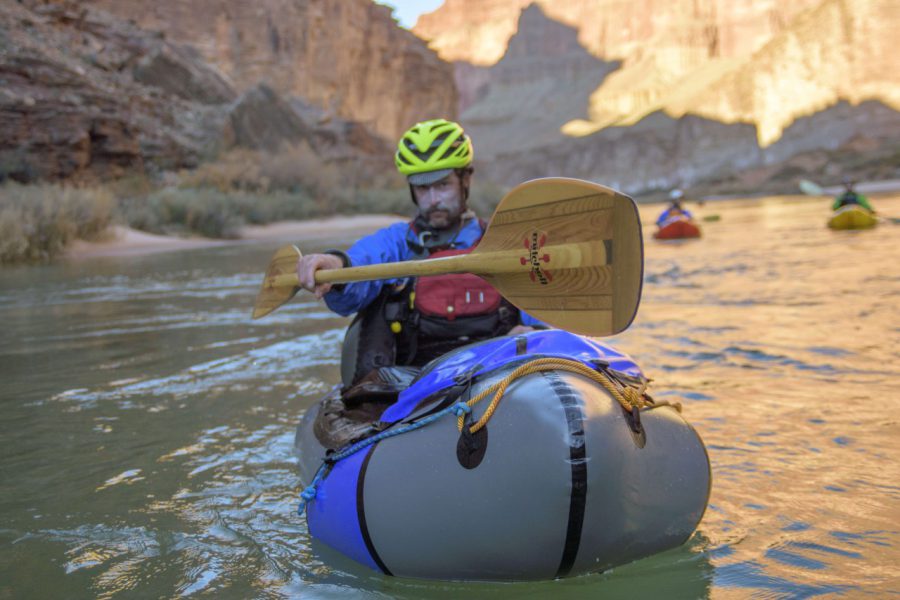
As for the five Europeans, it might turn out that we were the first European packrafters to paddle the Grand Canyon. But we were not sure about that. What I am certain of is that it was one ‘hack of a trip’.
Things that made it special
And here are some other things that made it special:
The improbability – as I mentioned in Part 1, i got very lucky to be invited for the trip that I never thought I would ever be able to do in my life.
The scenery – it was diverse and griping. You never got tired of it. And even by the end of the trip you felt as if it was all a dream.
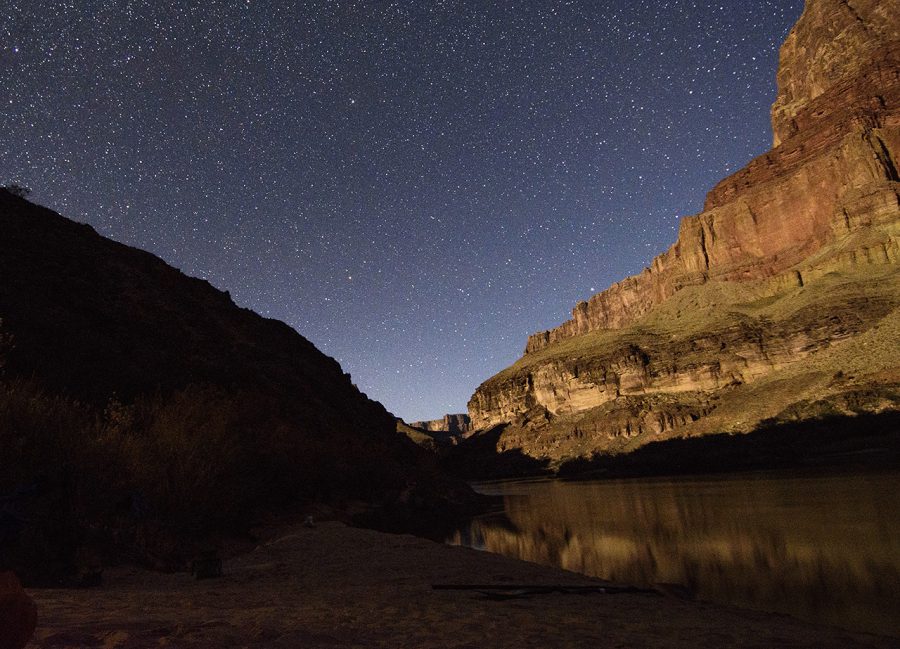
The rapid – they were often big and crazy, but they also felt relatively save. In all my 14 swims I felt uncomfortable only once when I was under water fir a while and one more time I felt that I touched the ground. All other times it was great. Even the Lava rapid, which most of us swam, was not a so terrible. Steve (aka Doom) said it to us from the very beginning: “18 seconds. That’s how long it takes to swim through the Lava rapid. Can you hold your breath for that much?”
The people – the people who I paddled it made this trip. Some of them were experienced and some of them were less so, but not once I felt judged or discouraged one way or another. It was a great group of people who were ready to share laughs and food and jump to help you if needed it. Thank you, guys!
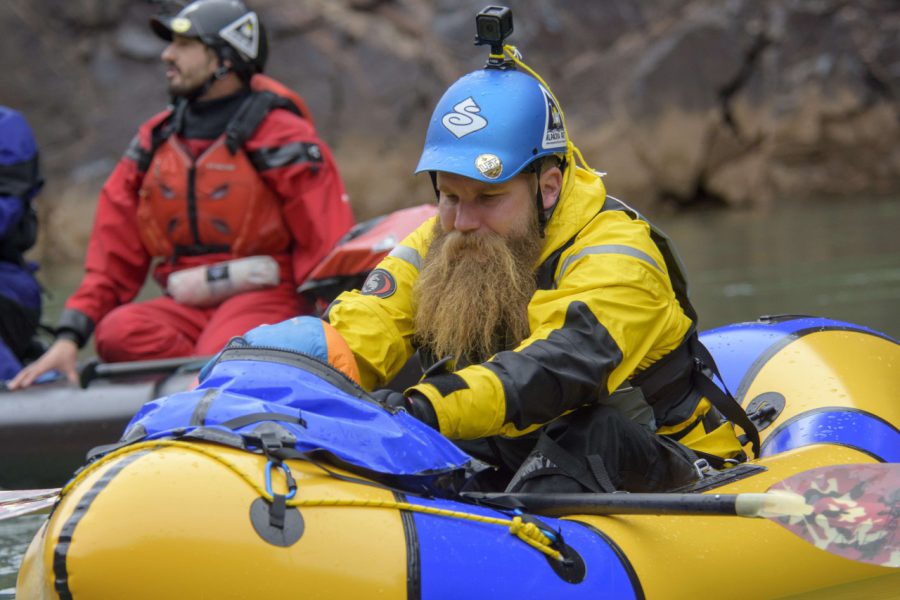
The wildlife – we were lucky to see some ring tailed cats, Californian condors (million-dollar birds as they are known there as it is how much it takes to reintroduce one bird Into the wild) and big horn sheep. We were also lucky NOT to see rattle snakes or scorpions, which seem to become a problem in warmer months (another good reason to travel in winter). We also didn’t have much problem with mice, ravens or bats. The latter you have to be very careful with as a lot of them carry rabies. We also enjoyed the flora, even though almost all plants were covered in thorns, spikes and needles of some kind, which does not make it look like a safe place for a packraft, the variety of them made it very memorable.
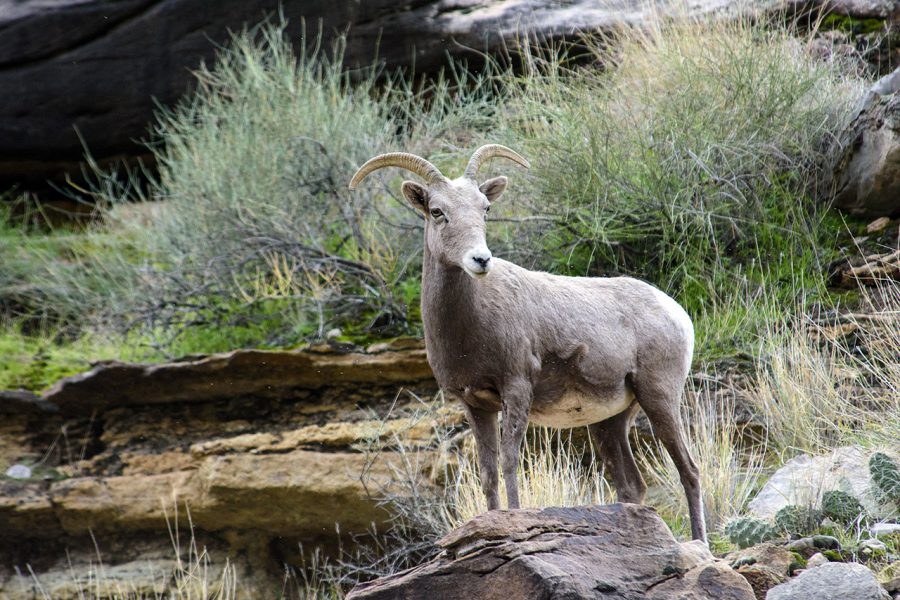
The side trips – besides climbing the Tabernacle, we tried to visit a different side canyon each lunch break we took. And those were all different and exciting. Some of them had carved stones. Others had waterfalls with ice cold water. Still other had magical turquoise streams. We also saw some remnants of the 1,000 years old culture (some pottery shards or an ancient wooden bridge high up in the canyon walls). But there was a lot more that we didn’t see – it was such a pity we could not explore more.

Regrets
And indeed, there were a few regrets, as well. And the first one was the trip was too short. With our permit, we could have easily spent twice as much time on the river, exploring side canyons and visiting archeological sites. But it was not possible as a lot of us had to be back for Christmas.
Another regret was that I missed the rapid, which is the best one according to many people I talked to. It’s the Hermit Rapid (Mile 95.5) and it has the biggest waves of the whole Grand Canyon. And one of such waves (as high as a house) through me out at the start of the rapid, and even though I didn’t flip, I could not get back and had to watch my friends riding this roller costar of a rapid, screening with pure excitement and joy.
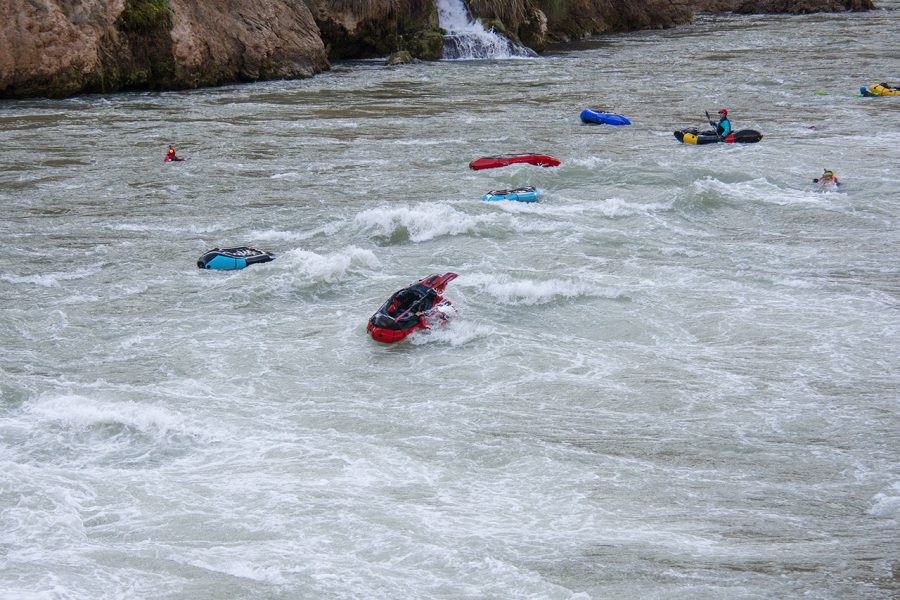
The final one is not so much of a regret but an anticlimactic feeling that I got after the Lava. Even though I flipped, it felt like the high point of the trip and that it should be the end of it (immoderately after the Lava Rapid there is a so-called Tequila Beach, where boats stop and drink tequila to celebrate their conquering or in most of our case, survival of the Lava). But it’s not the end. There are still close to 50 miles of the river with hardly any big rapids to speak of. And though there are some great places to visit and the views are as spectacular as ever, I felt a bit sad. Maybe if would have been a different story if I didn’t flip in the Lava. Who knows.
Necessary equipment
There are some items of equipment are either required by law (and a ranger at the put-in will check them very carefully, before giving a two-hour briefing after which you are allowed to paddle) or that proved to be useful.
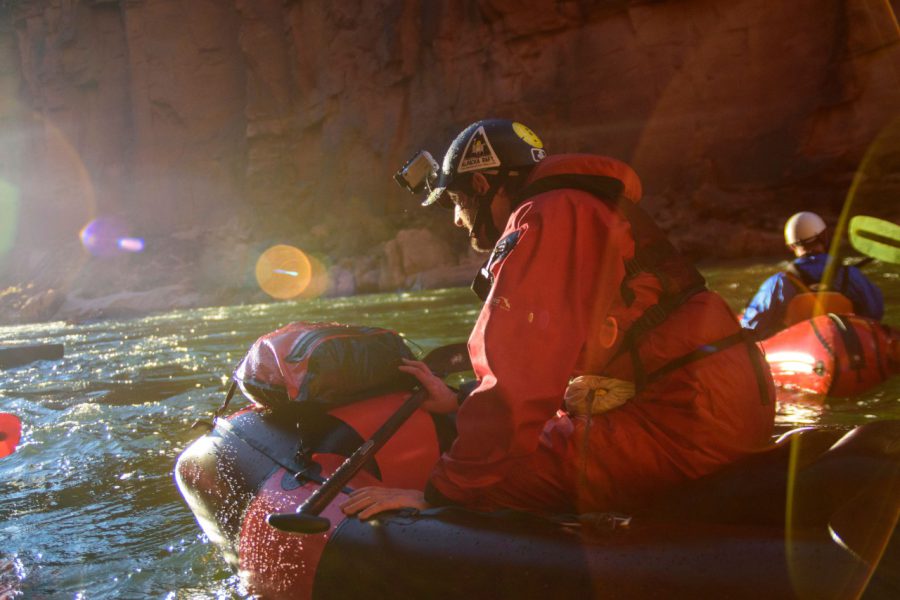
The required items include:
a US Coast Guard certified PFD with the visible marking (I talked about it in Part 1 already),
a group and personal first airline kits,
a signal mirror,
a satellite phone or an inReach device,
a fire pan and a fire blanket,
a kitchen tarp on which you need to cook, a washing-up bucket and a strainer, which you need to use to catch even small particles that are left on the water (the ranger told us that 99.9 percent of what we brought with, we should also take back),
An individual Groover – a ‘poop box’ which we had to use together with some stuff that resembled cat litter box filling,
Replacement paddles – for a group our size we needed to have at least three of them,
Repair kits.
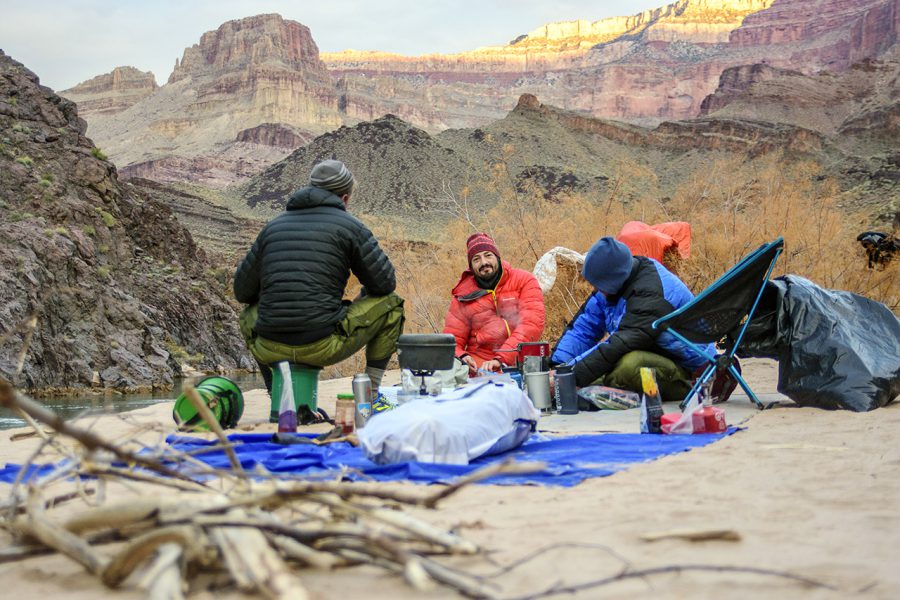
The things that proved to be useful and in some case essential were:
packrafts with an internal storage, without which paddling such river as the Colorado on a self-supported trip would have been impossible.
Toothbrush and a small rug for cleaning T-zips. These things seemed to be obvious for those of us who were more used to desert environment, but for some of us they came as a major discovery, without which we would not have been able to complete the trip. Good thing that we had some experts who showed us how to use them properly as well!
A river guide book – there are several versions of them on the market, but the one we used most was the one printed on waterproof paper/material that included a step-by-step break-down of the complete run with the rapids and instructions on how to run them, but also some information on the points of interest on the way.
A thermos flask, which was used to keep us warm and our spirits high. Each morning we made some hot brew and took it with us on the river so that we didn’t have to wast time on preparing something during our short lunch breaks – instead we could go and explore side canyons.
Night-time entertainment, which in our case was a game of Bachiwith the balls that glowed in the dark. And very often, as it got dark early, one of us would suggest to play this game and we would end up throwing them in the compete darkness cross-country style, without properly seeing what the terrain was like. It was a lot of fun!
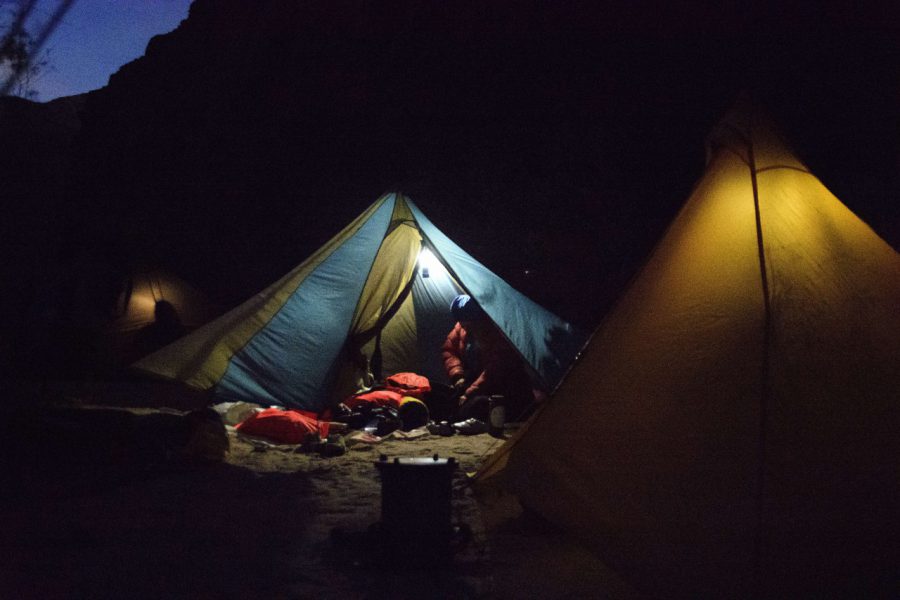
‘Lucky’
In general we were really lucky. The weather during the whole trip was good and significantly warmer than we expected. Most of us (well, mostly the Americans) did not even use their tents and just slept in the open – they call it cowboy camping it seems. Still it was not warm enough for creepy crawlies and because it was after the main season it was neither crowded and we could also use drift wood for fires (usually you would need to bring your own for the whole trip).
Changed preconceptions
There were a few things that I had to relearn. The first and the most obvious is that you need to pee in the river. Usually, when in the wilderness and you have to go number 1, you need to do it some distance from the water. This time it was the opposite. You needed to do it in the water. And that’s something that took some time to get used to. The reason for this the ranger explained,though, made sense. There are thousands of people each year and there are only a certain number of places that are suitable for camping and if everyone had weed there, all these places would have smelled terribly and no one would have been able to use them any more. Especially as this is a desert and it doesn’t rain that much here. On the other hand, the water volumes are big enough to cope with all this safely.
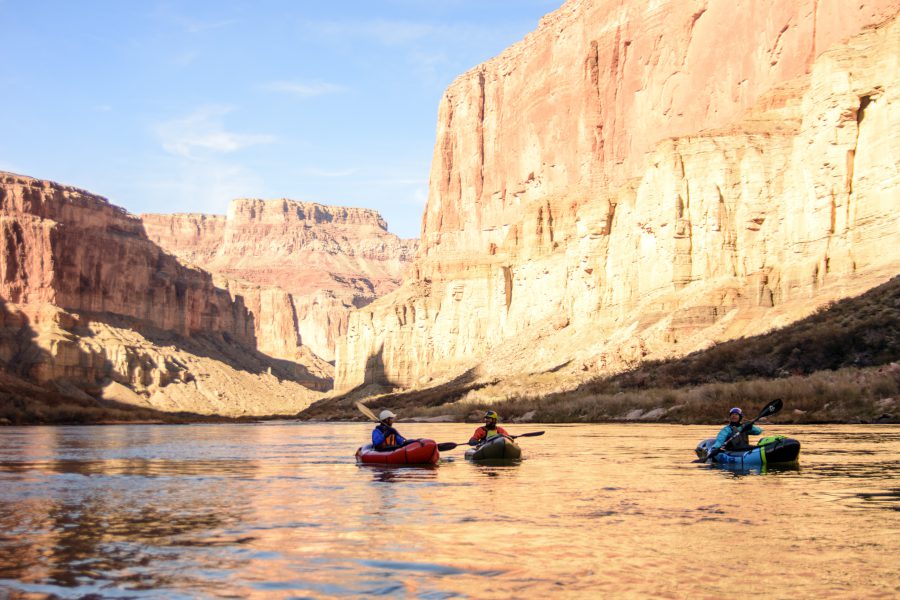
Another thing that I had to reconsider was what is meant by ‘flat water’. I live in the Netherlands where ‘flat’ means ‘flat’ (think of a lake). And this is what I expected as well when I was told that we would have a section of ‘flat water’. But nothing was further from truth – while there were not many rapids, the water was fast-flowing and there were still a lot of riffles. Nothing like Dutch flat in my mind.
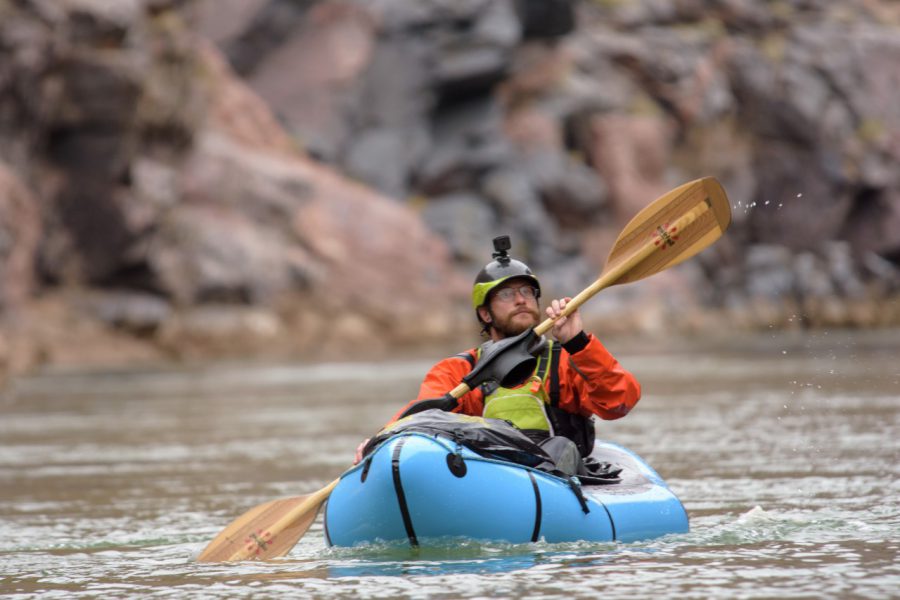
Learned Lessons
Looking back at the whole experience, I can think of at least 5 lessons that I learned. The first one is “Don’t panic and self-rescue and/or ride it out”. This is exactly what you need to do if you flip. Think straight and try to get into your boat yourself. Some of the guys were really good at doing it – they wood flip at the beginning of a rapid and be back in their packraft, paddling, by the end of it. With my heavily-loaded Gnarwhal, I could not do it so easily and I often preferred to ‘ride it out’ and get back into the boat in an eddy.
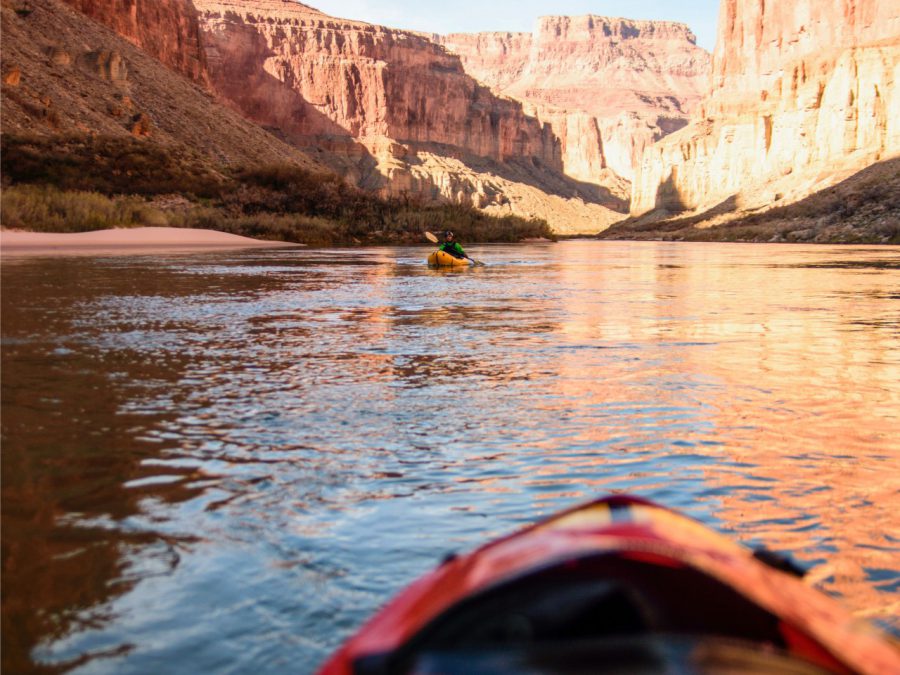
The second lesson is “A dryduit are great for washing your hair.” This is the know-how that Katja and Caj came up with. They would keep their shampoo in a bow bag, and at the end of the day, just before getting out of their drysuits, they would soap up their hair and go for a swim. I tried it as well and it worked really great.
The third lesson was that “Cowboy camping is fun.” I sort of knew that already, but after watching my American friends for a while I tried it out myself and I liked it a lot. The only reason why I didn’t do it all the time was the fear that my stuff could be damaged by the rodents or that I could be bitten by a rabid bat.
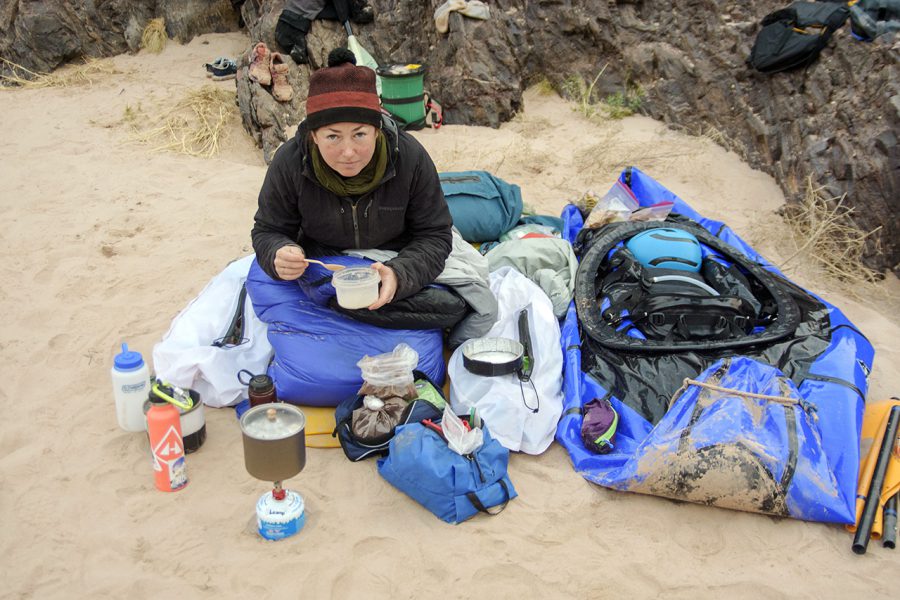
The fourth lesson was the “Miso soup is better than tea.” Please don’t take it out of the context. It was much better to have it in your thermos flask during a break as some of my friends did. It did not only warm you us, but it also provided much-needed nourishment.
And related to this is my final lesson – “Regular supermarket food was better than special travel food for this tip.” And it was indeed so. I had both but I hardly used any of the freeze-dried food that I brought with me. Nor did the others. Next time I should better save my money and get a nice variety from a supermarket. Including some chips that could be stored in the nose of my packraft.
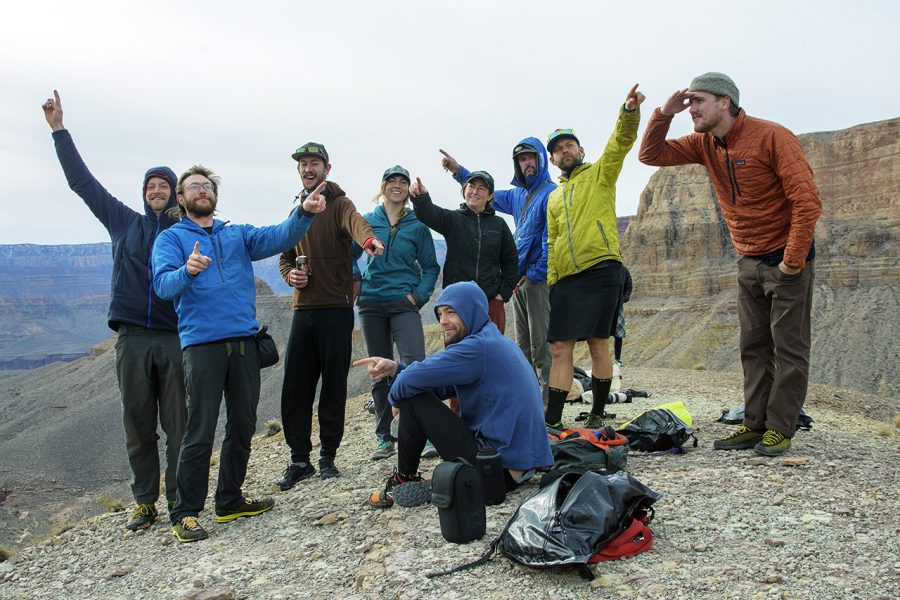
Conclusion
Whereas not the cheapest, it was a great trip that was both great fun and taught me a lot as well and I would love to repeat it at a heart bit.
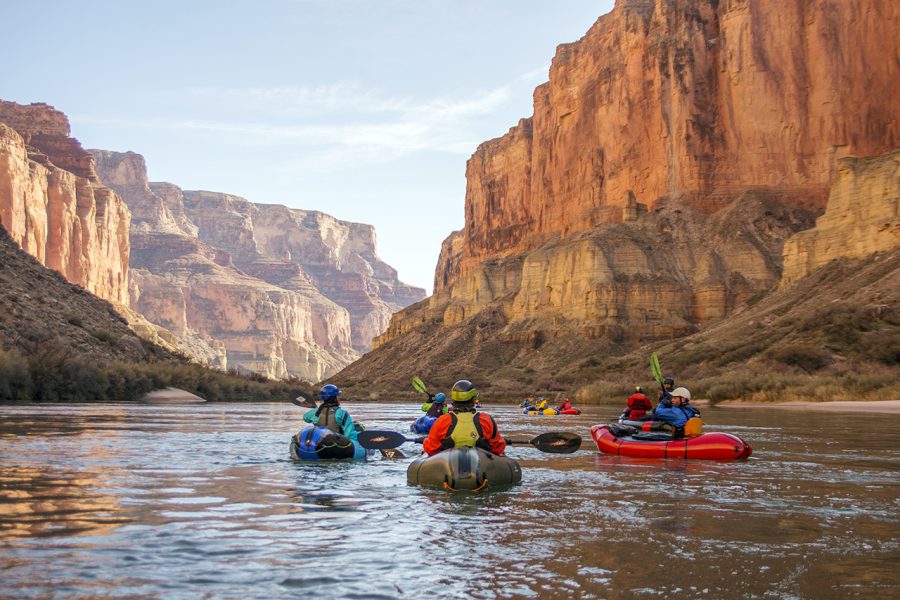
Related Articles
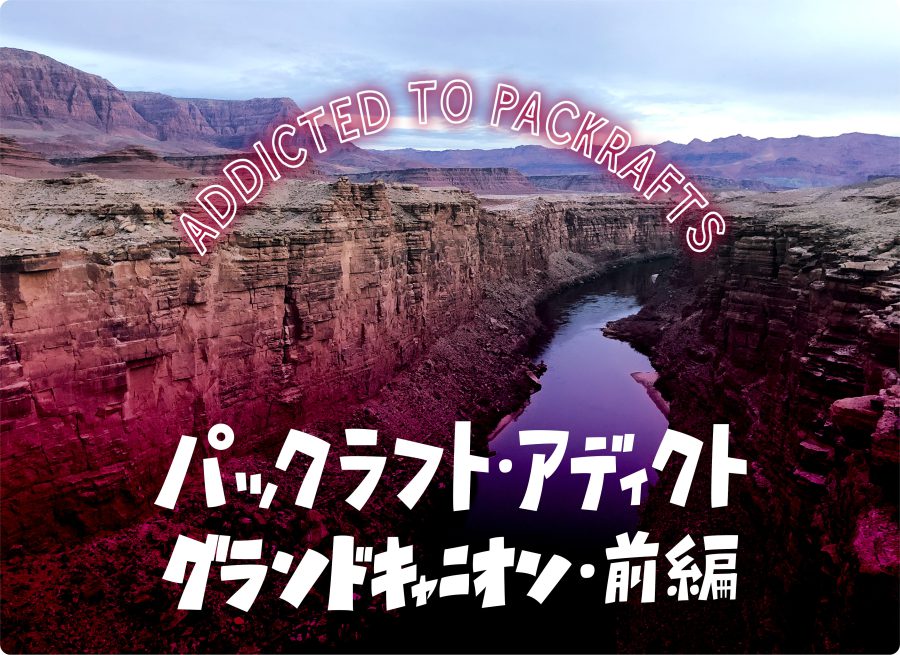
パックラフト・アディクト | #25 グランドキャニオン <前編>一通のメールから始まった人生最高の旅
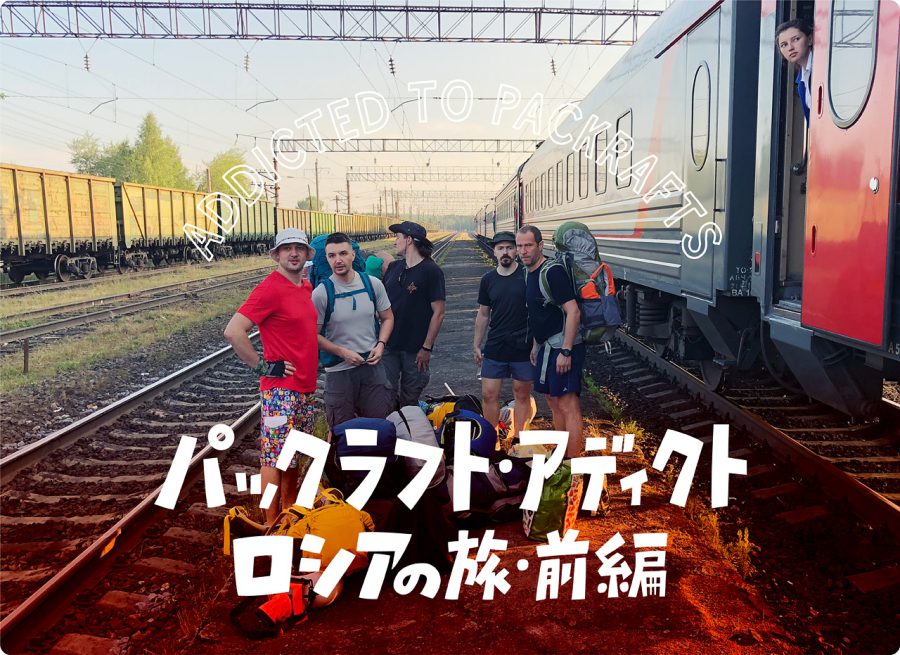
パックラフト・アディクト | #11 ロシアのパックラフトの旅 <前編>冒険のはじまり
- « 前へ
- 2 / 2
- 次へ »
TAGS:

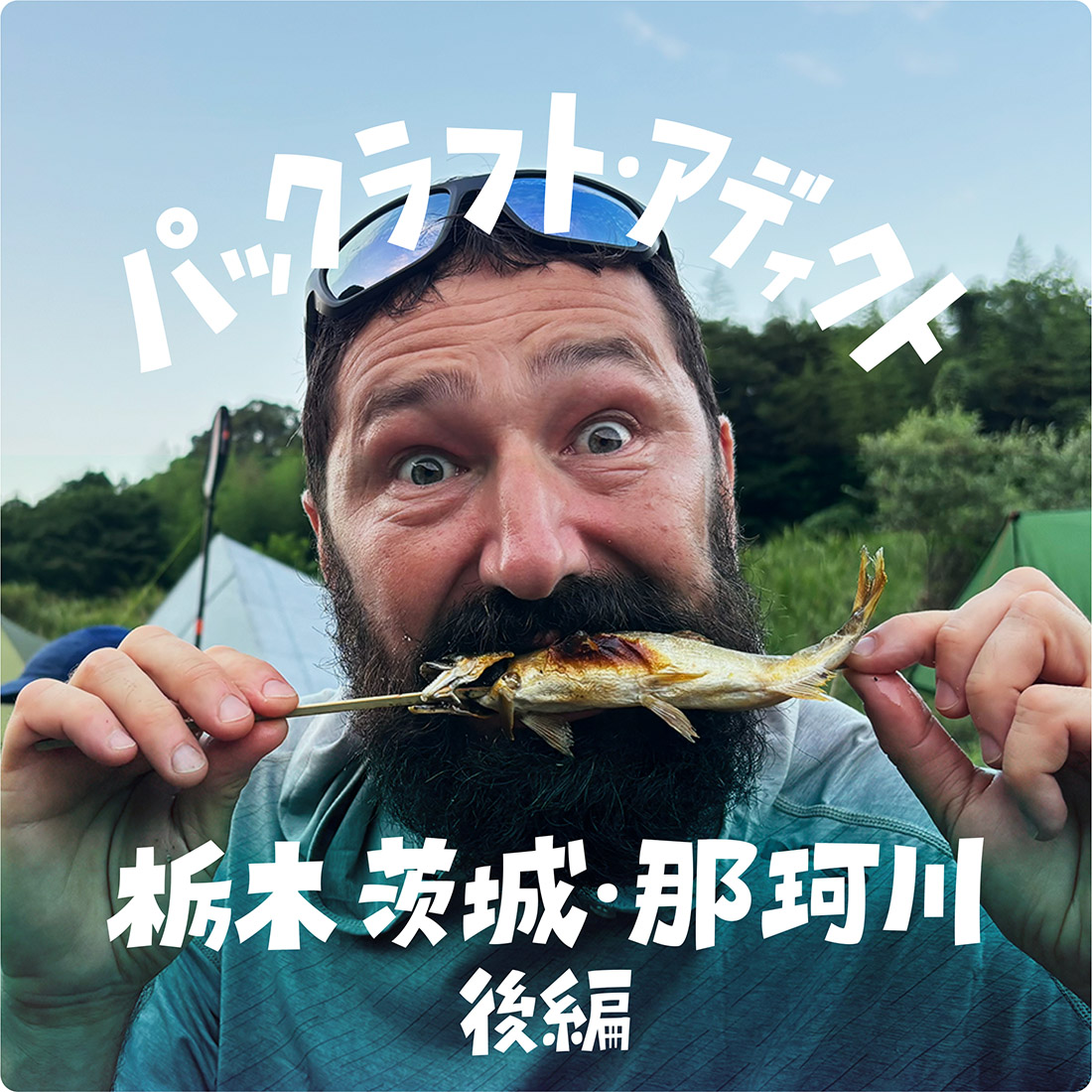
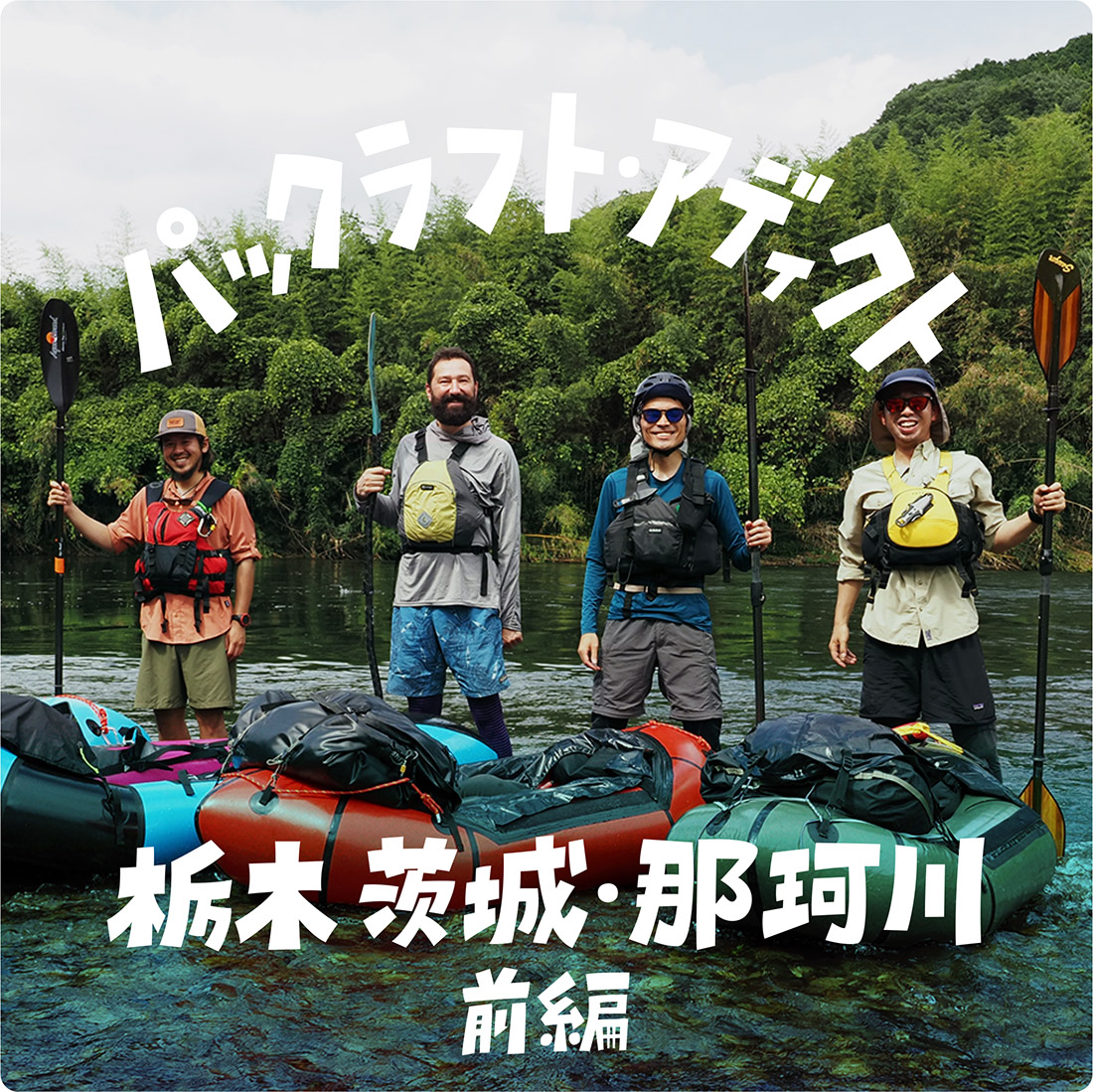
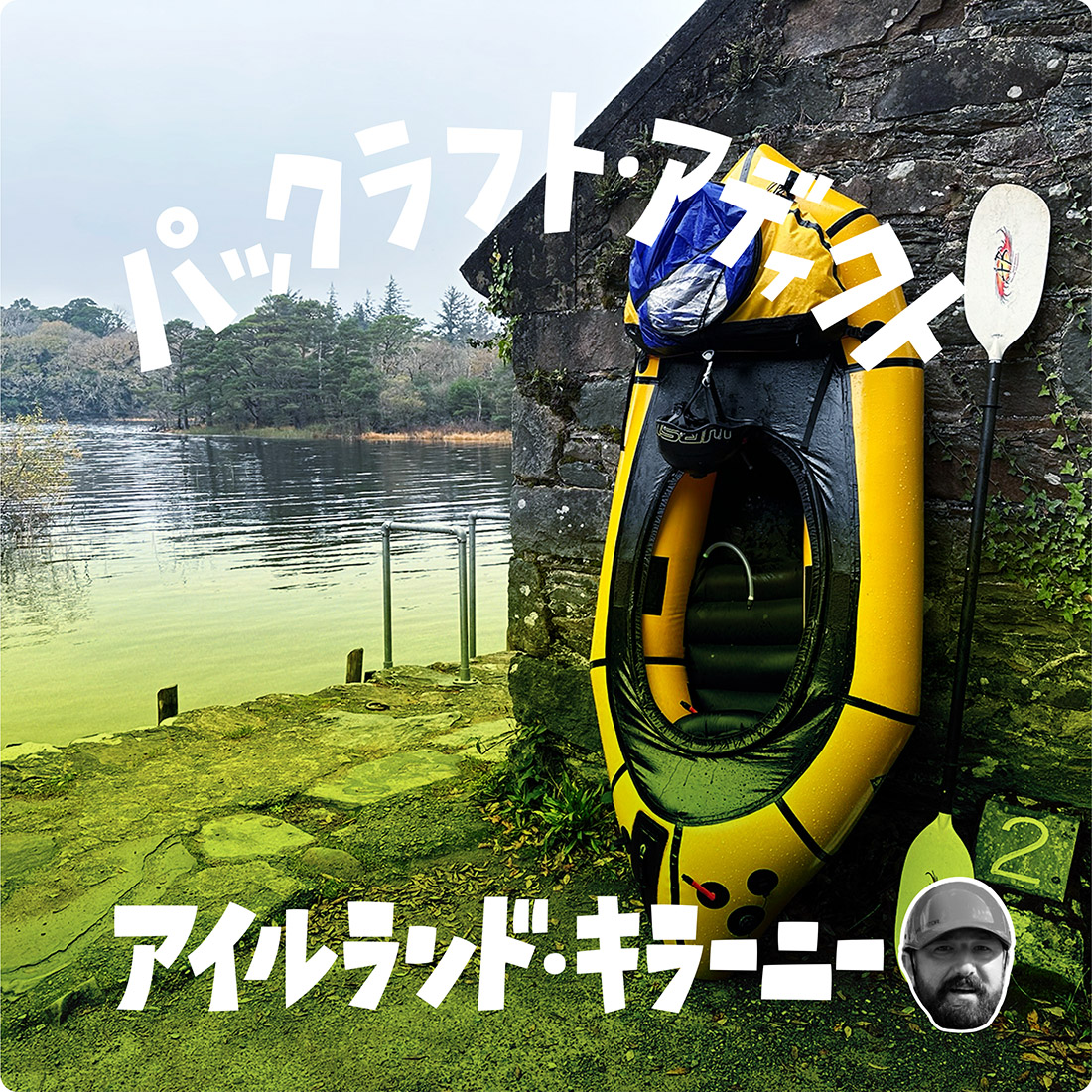
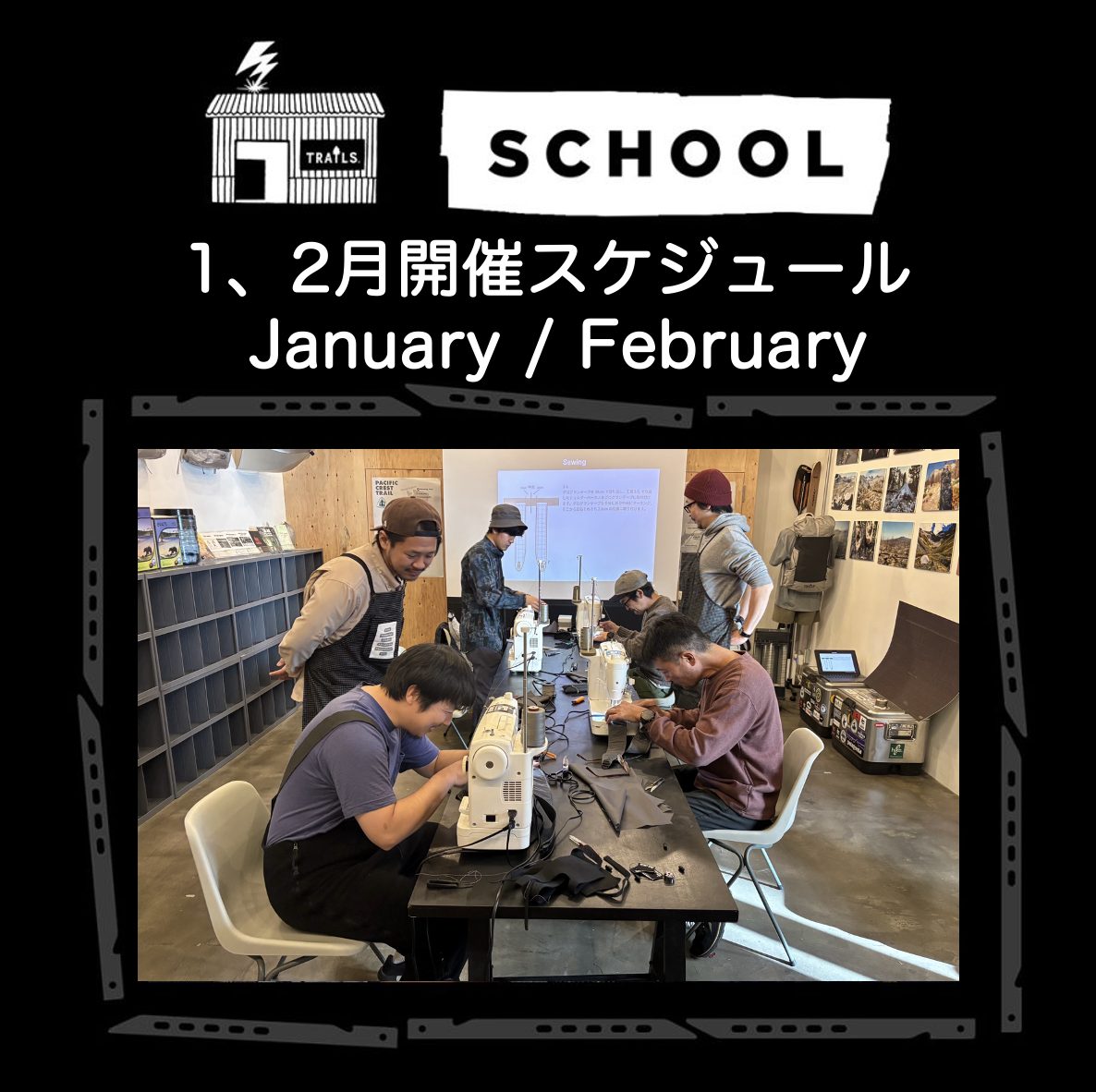
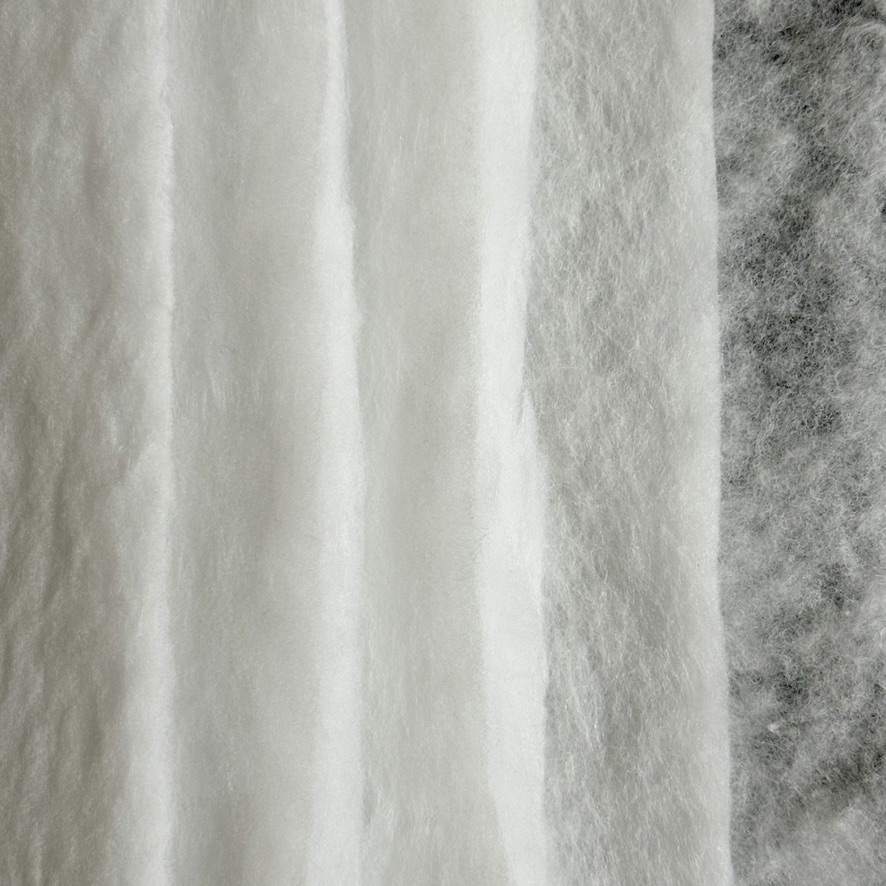
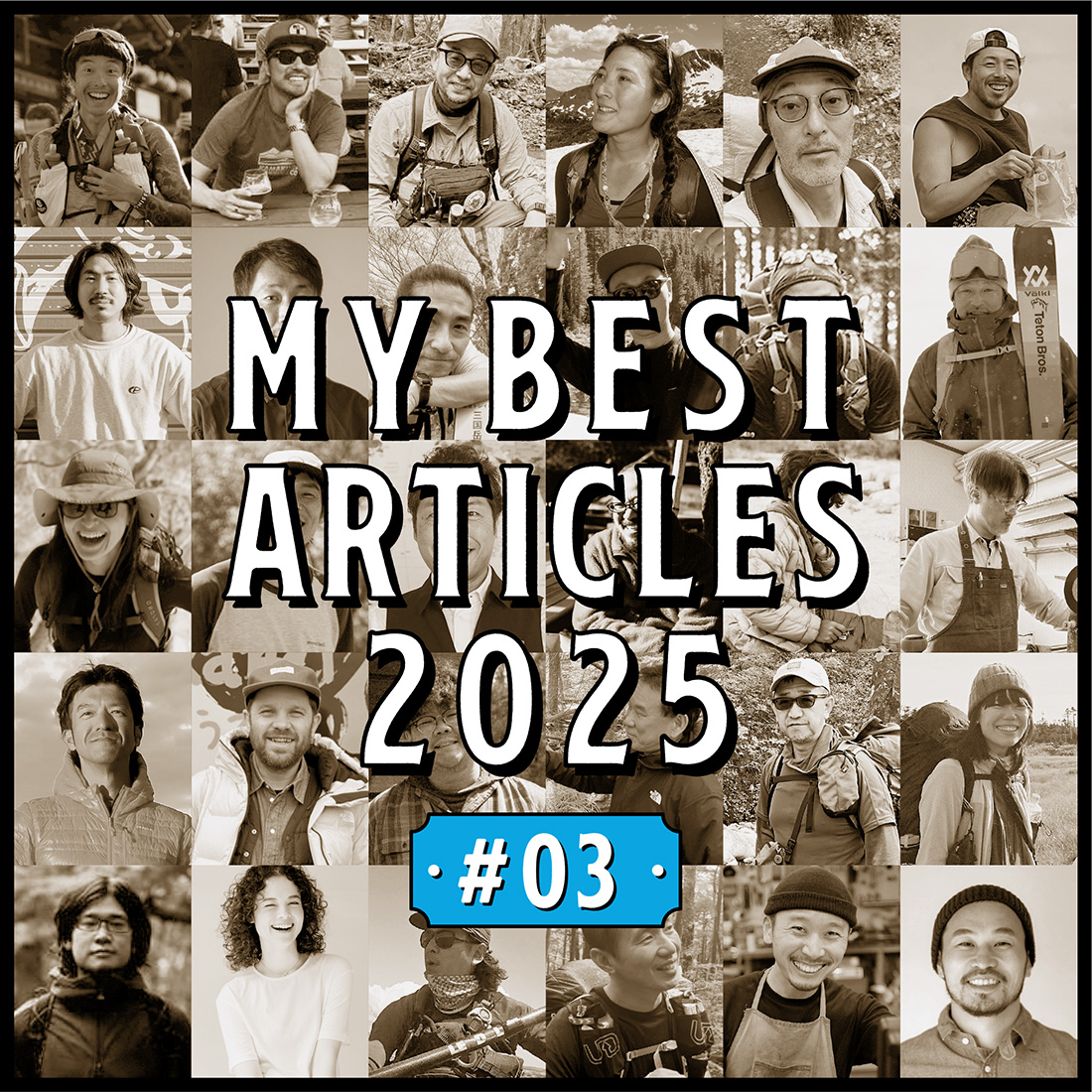
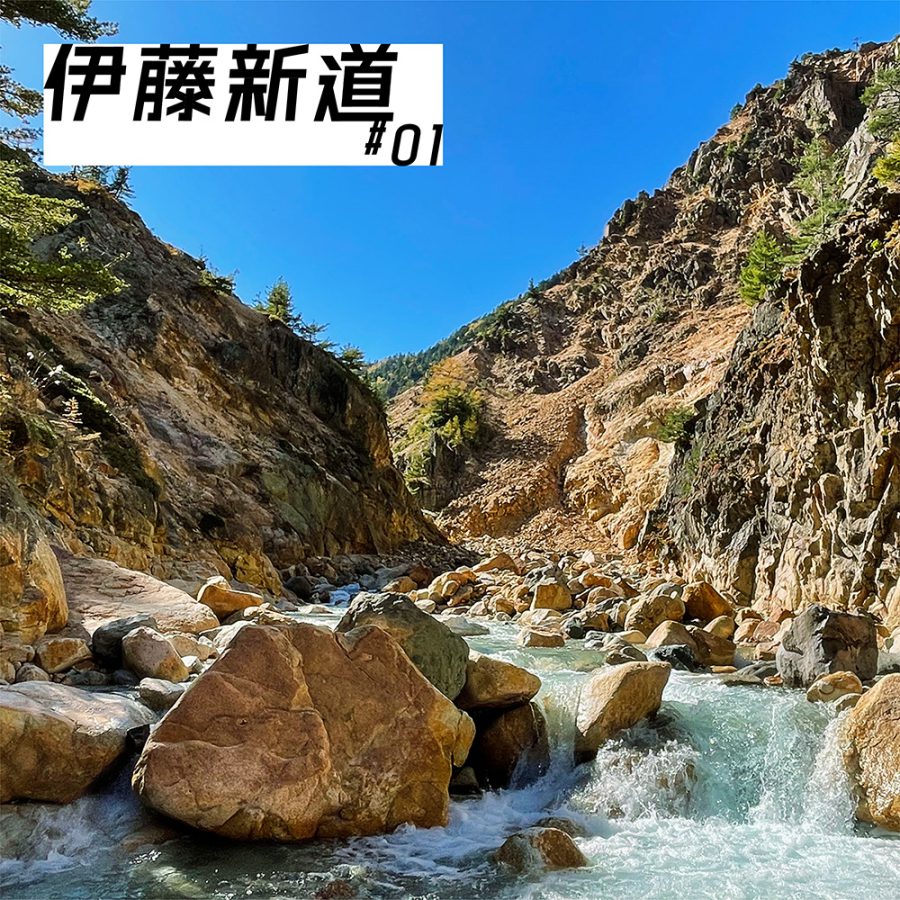
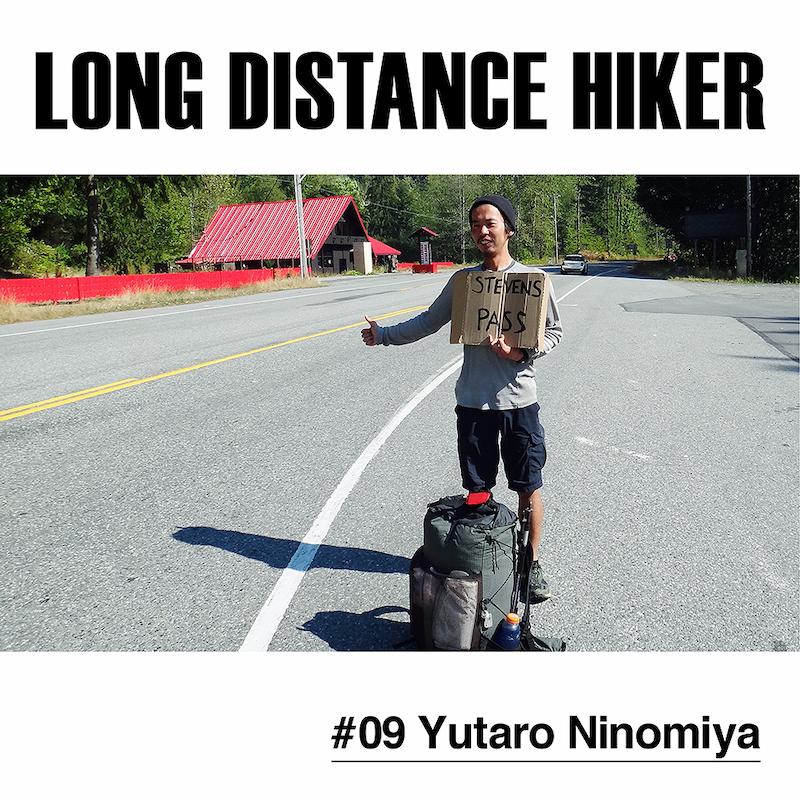
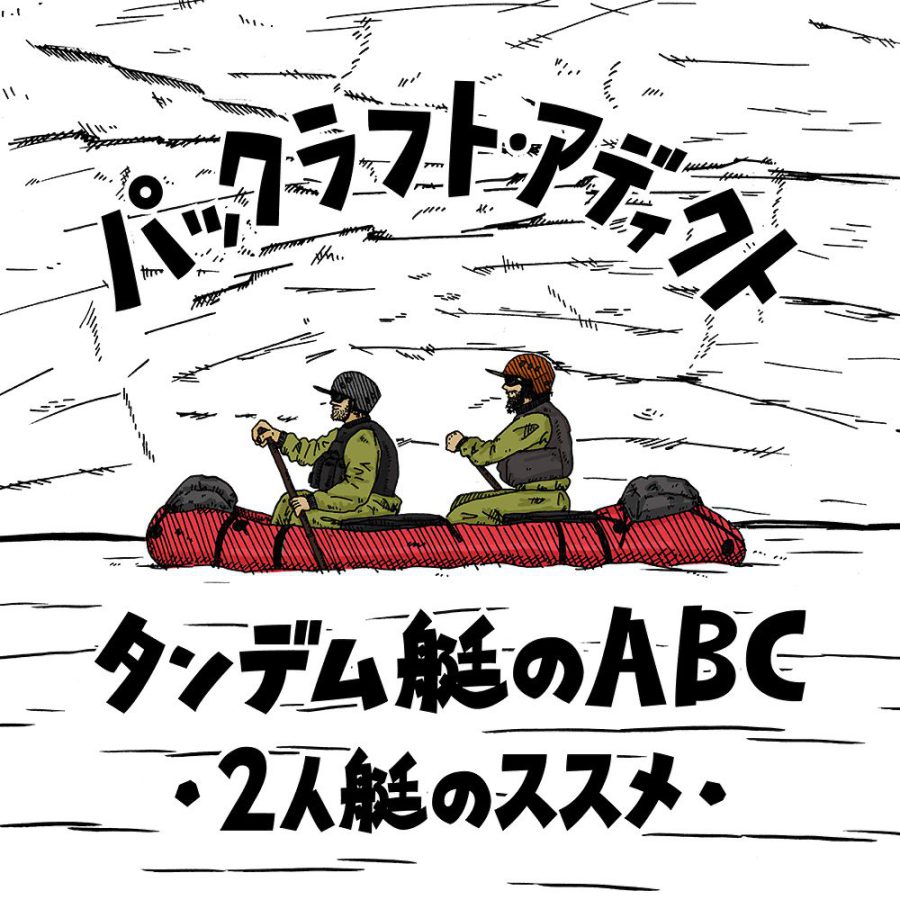
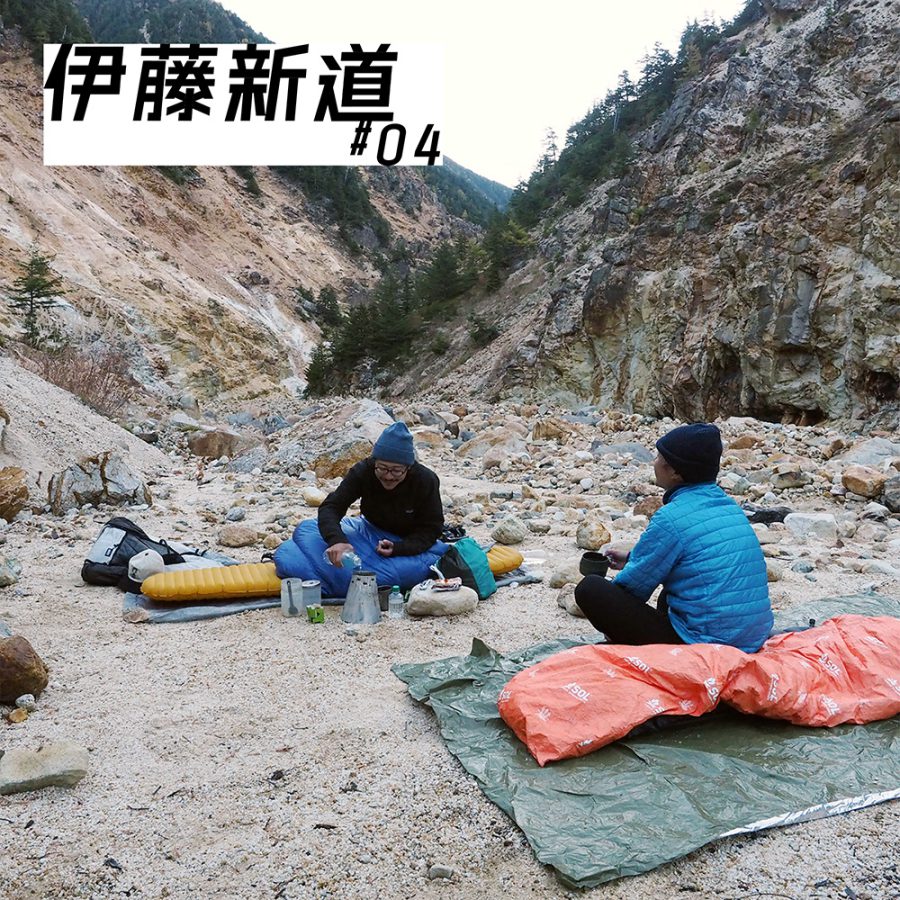
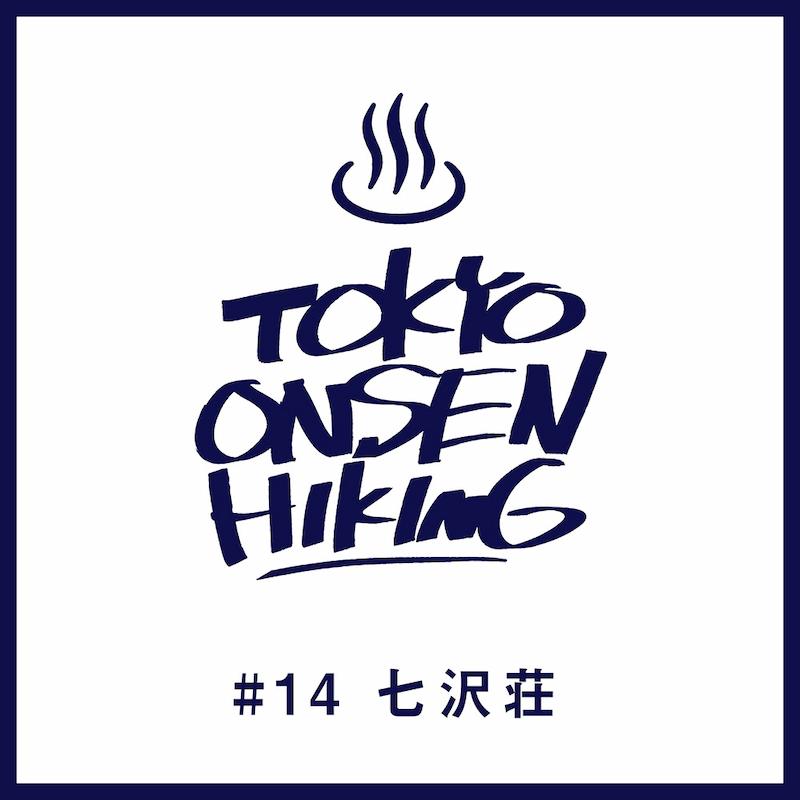

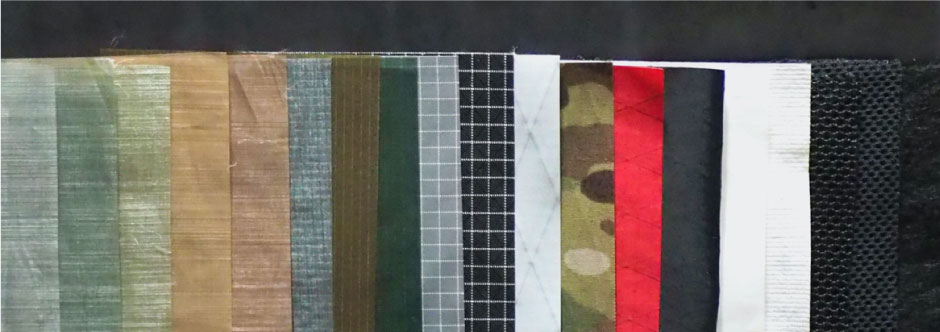
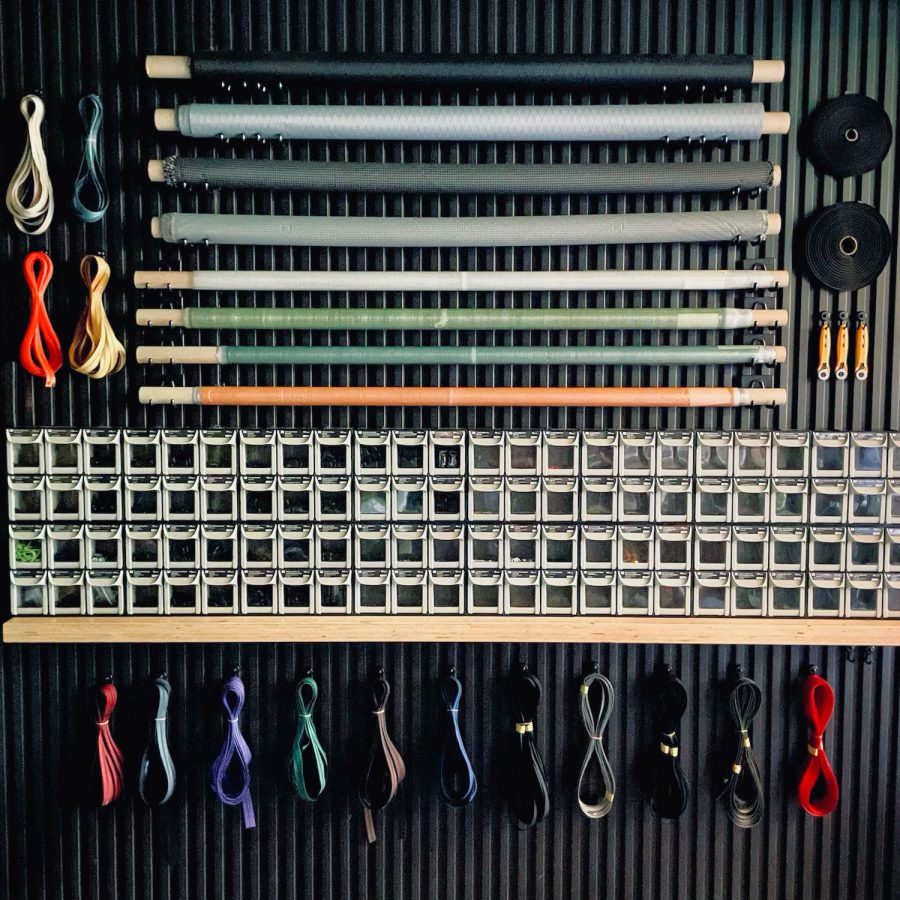 ULギアを自作するための生地、プラパーツ、ジッパー…
ULギアを自作するための生地、プラパーツ、ジッパー… 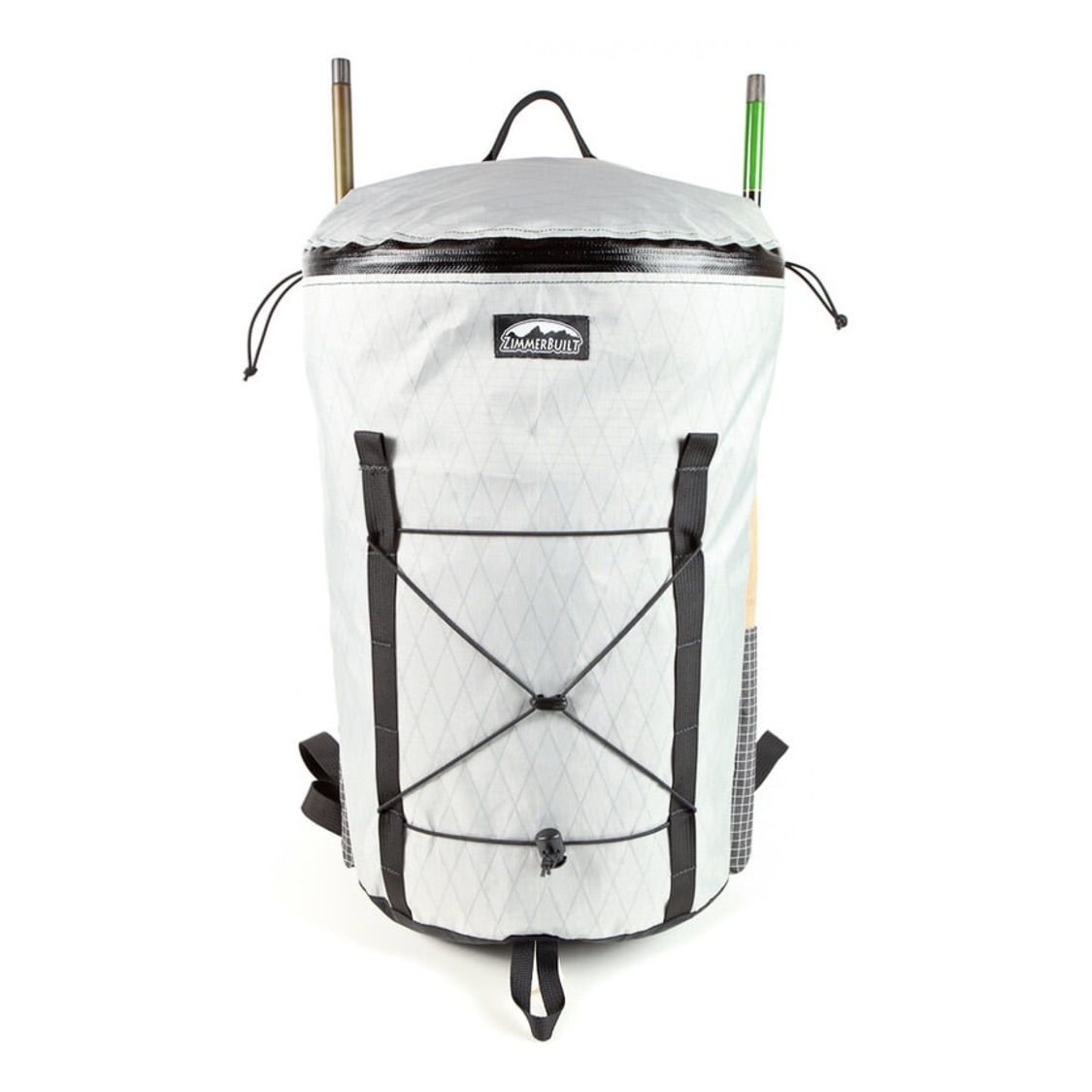 ZimmerBuilt | TailWater P…
ZimmerBuilt | TailWater P… 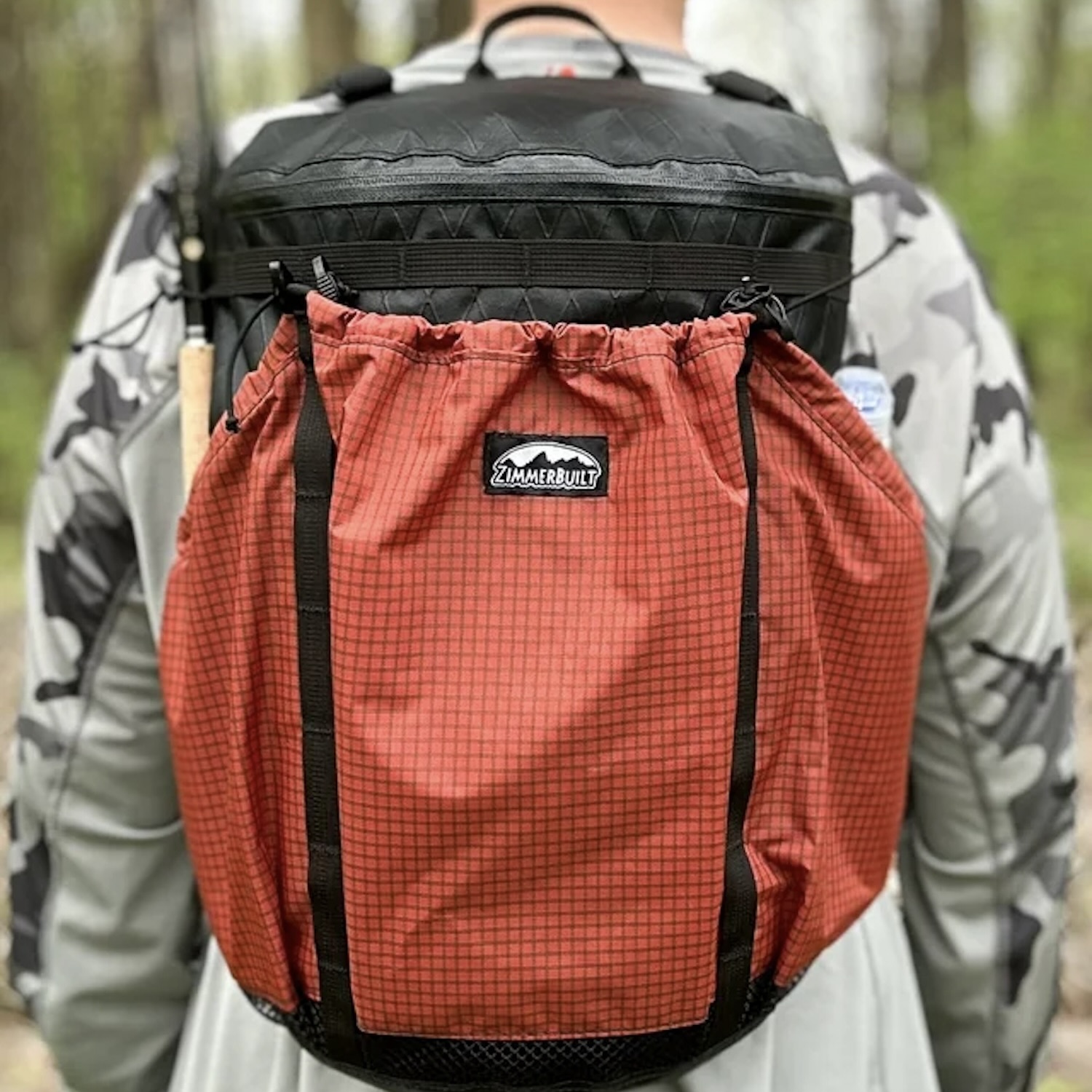 ZimmerBuilt | PocketWater…
ZimmerBuilt | PocketWater… 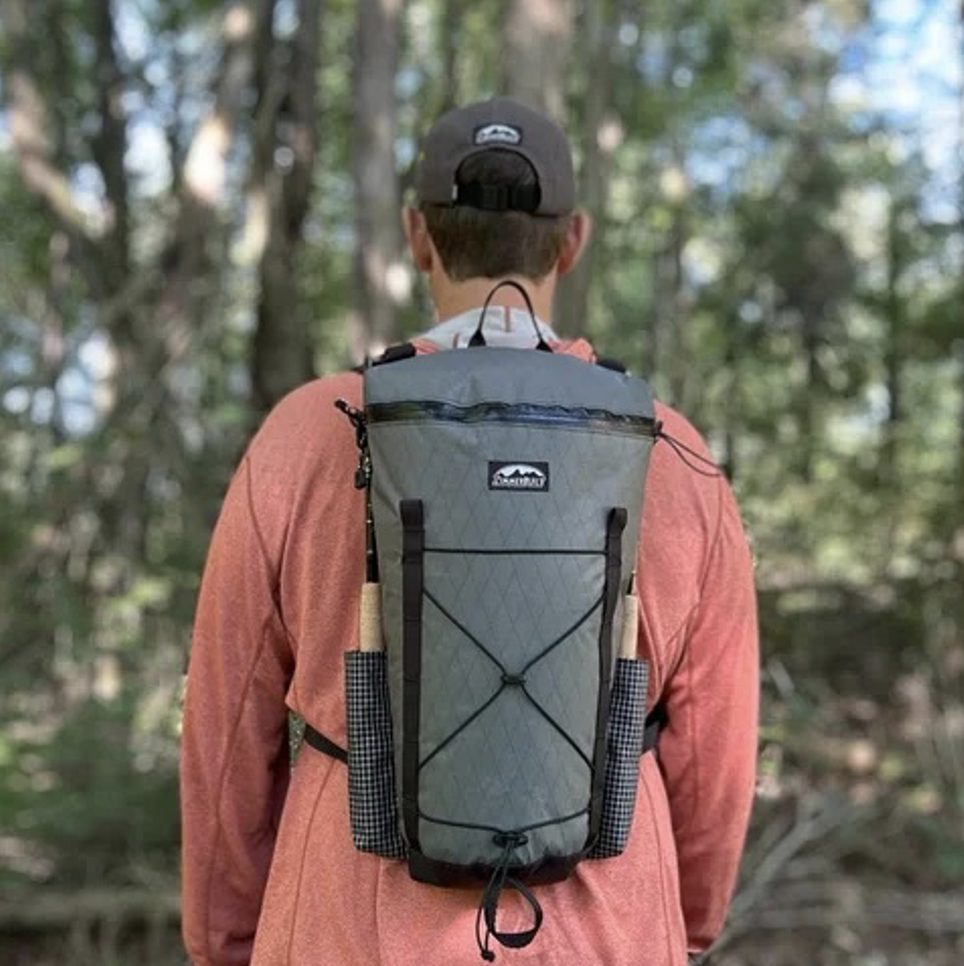 ZimmerBuilt | DeadDrift P…
ZimmerBuilt | DeadDrift P… 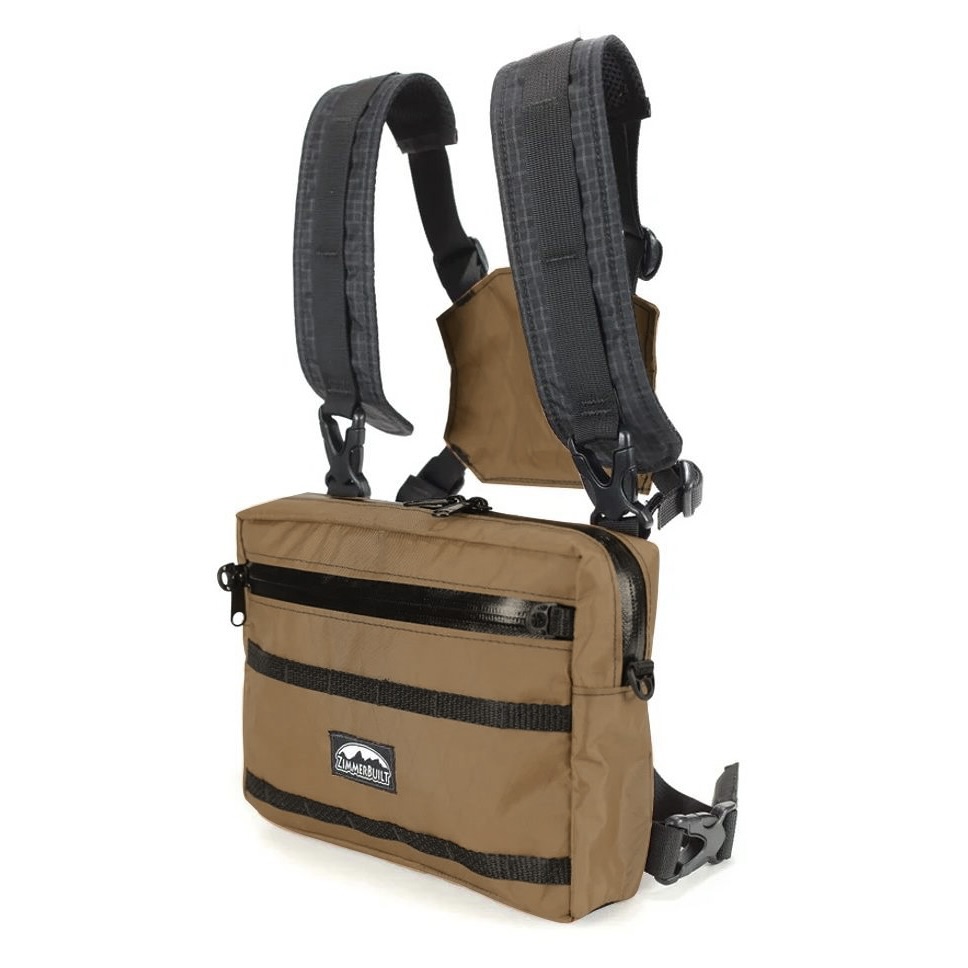 ZimmerBuilt | Arrowood Ch…
ZimmerBuilt | Arrowood Ch… 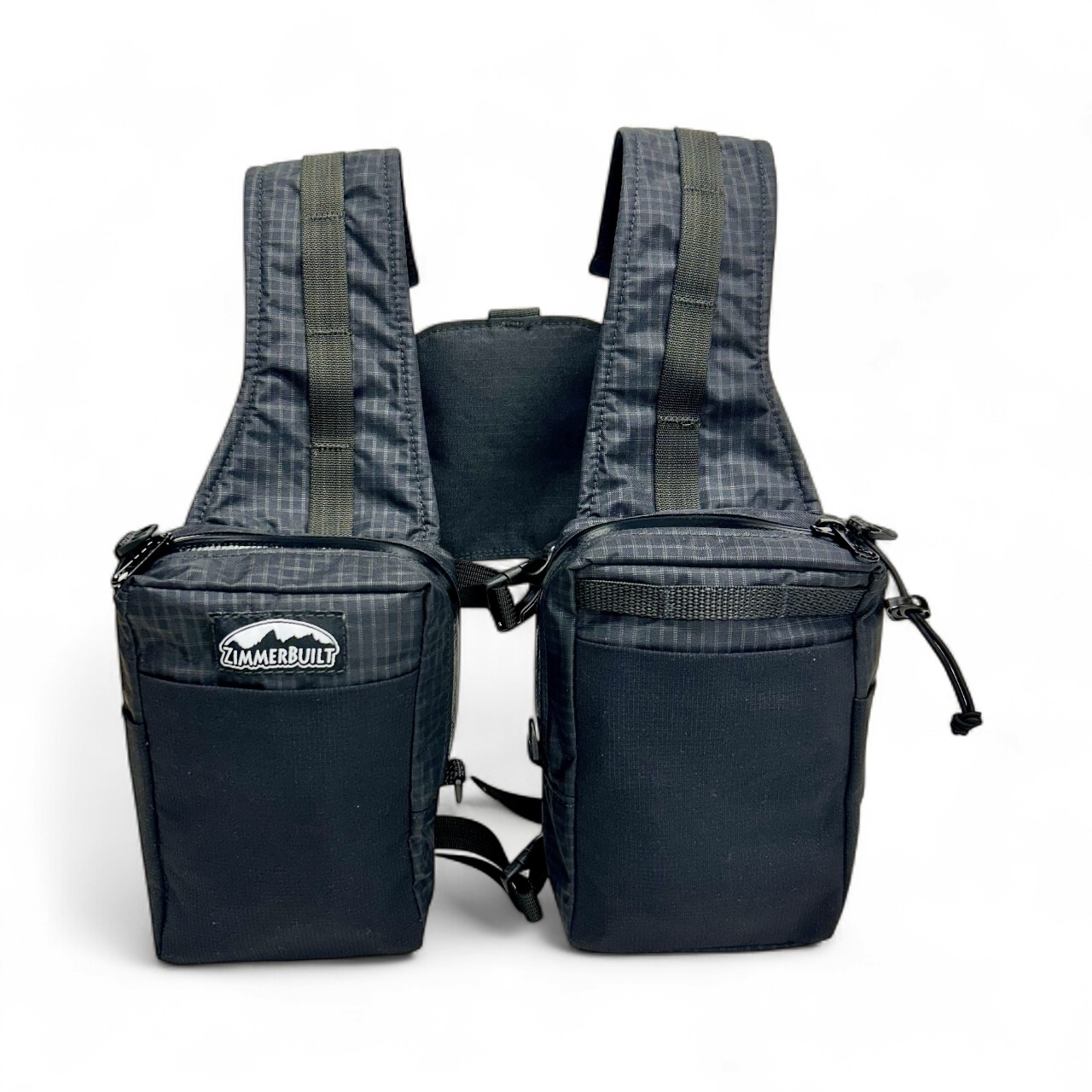 ZimmerBuilt | SplitShot C…
ZimmerBuilt | SplitShot C… 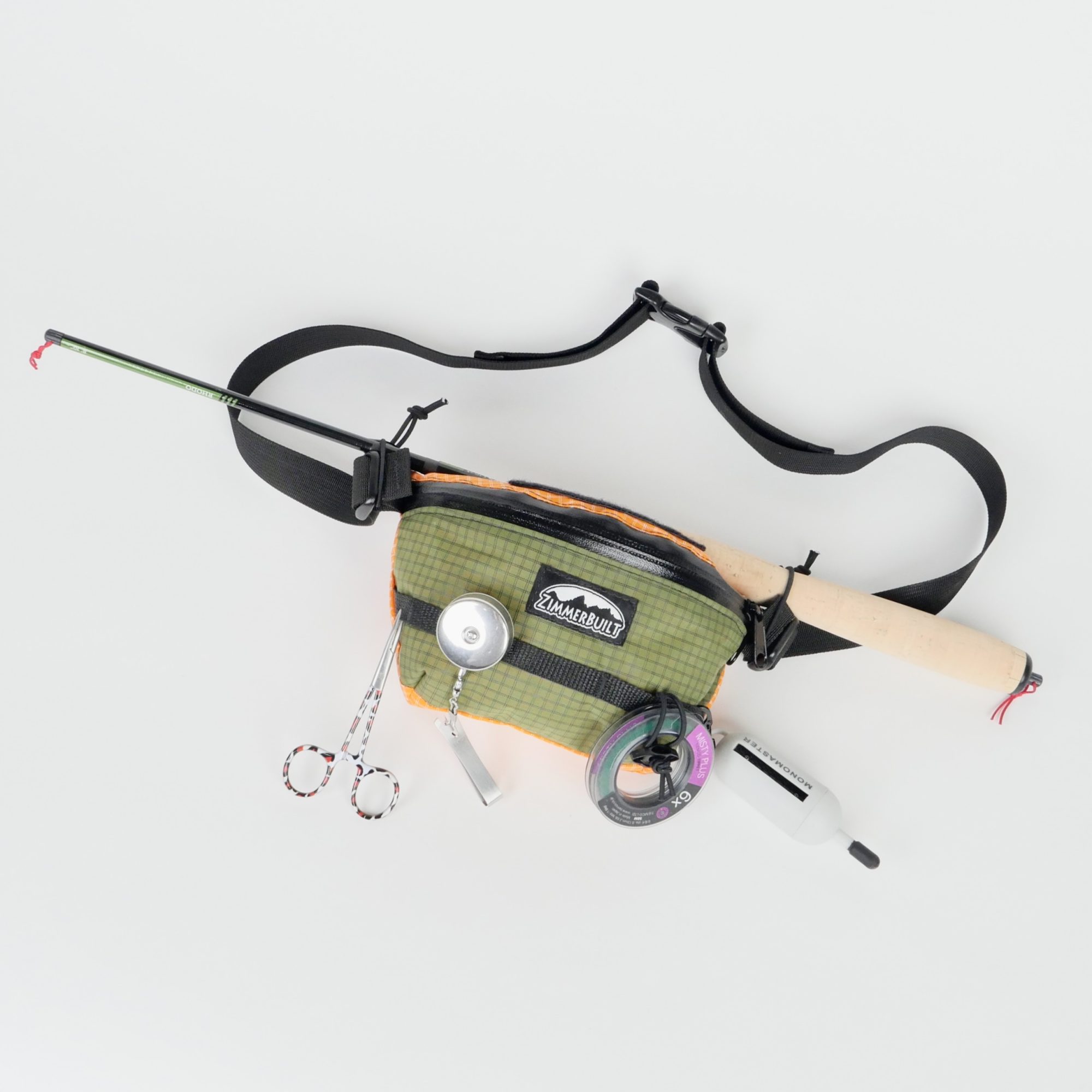 ZimmerBuilt | Darter Pack…
ZimmerBuilt | Darter Pack… 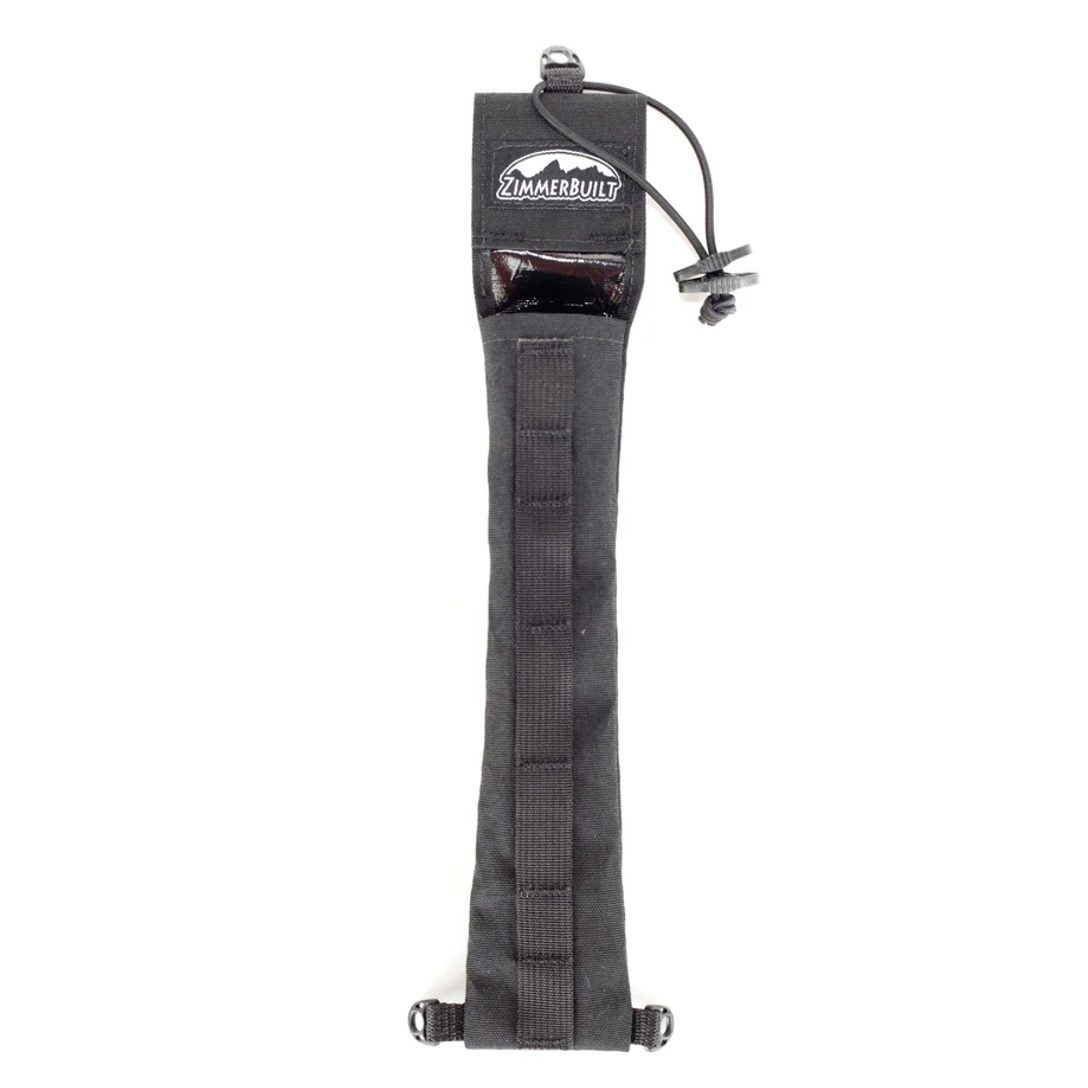 ZimmerBuilt | QuickDraw (…
ZimmerBuilt | QuickDraw (… 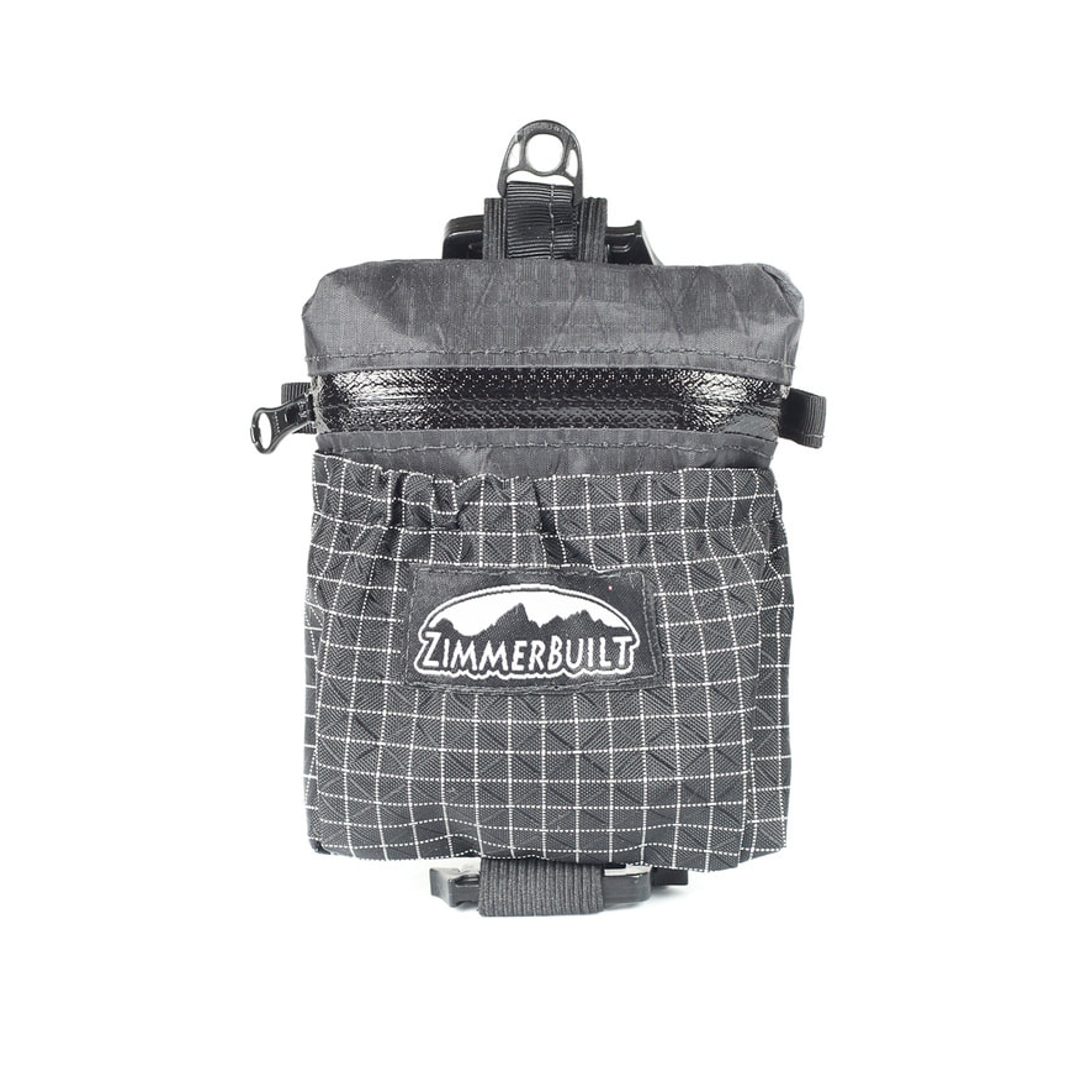 ZimmerBuilt | Micro Pack …
ZimmerBuilt | Micro Pack … 